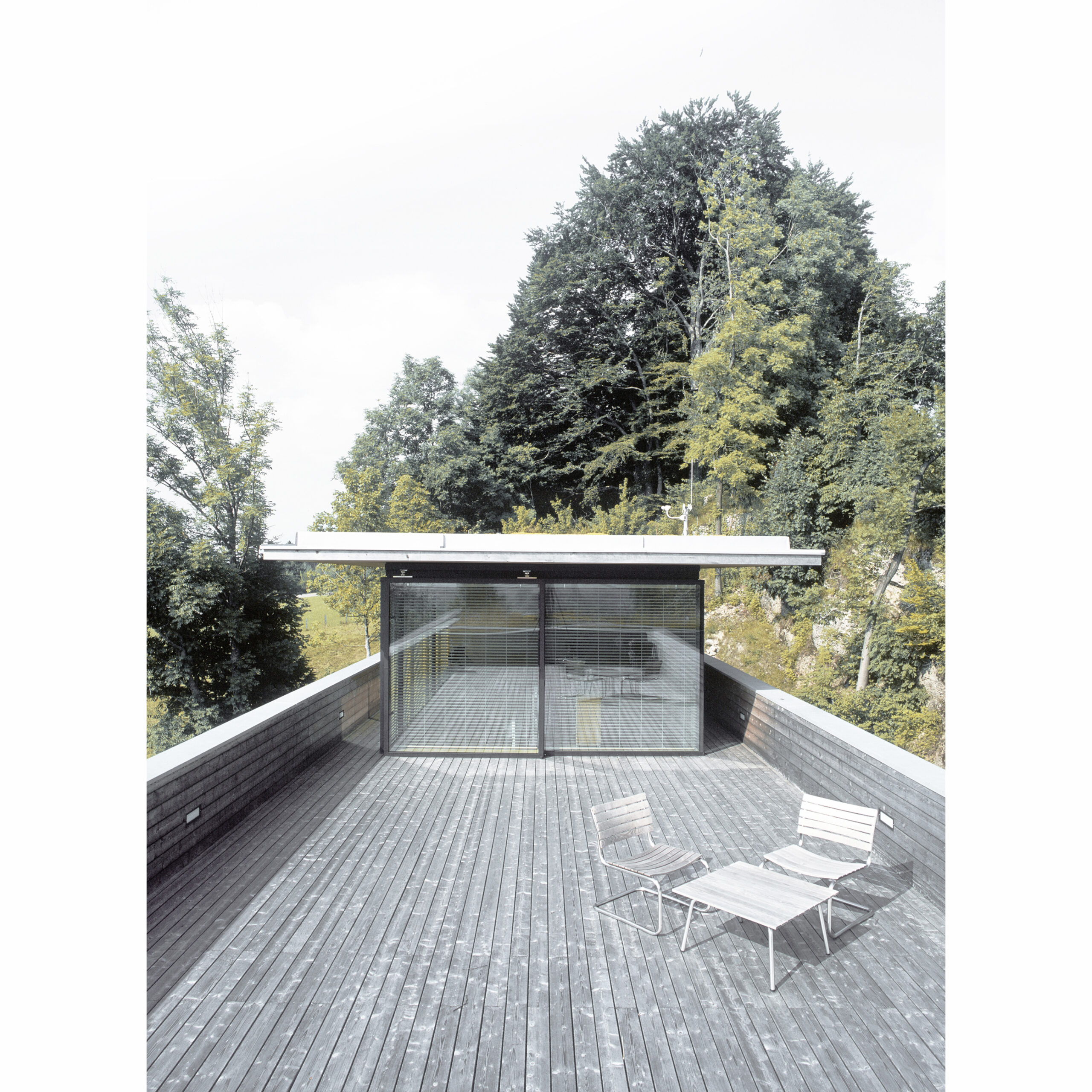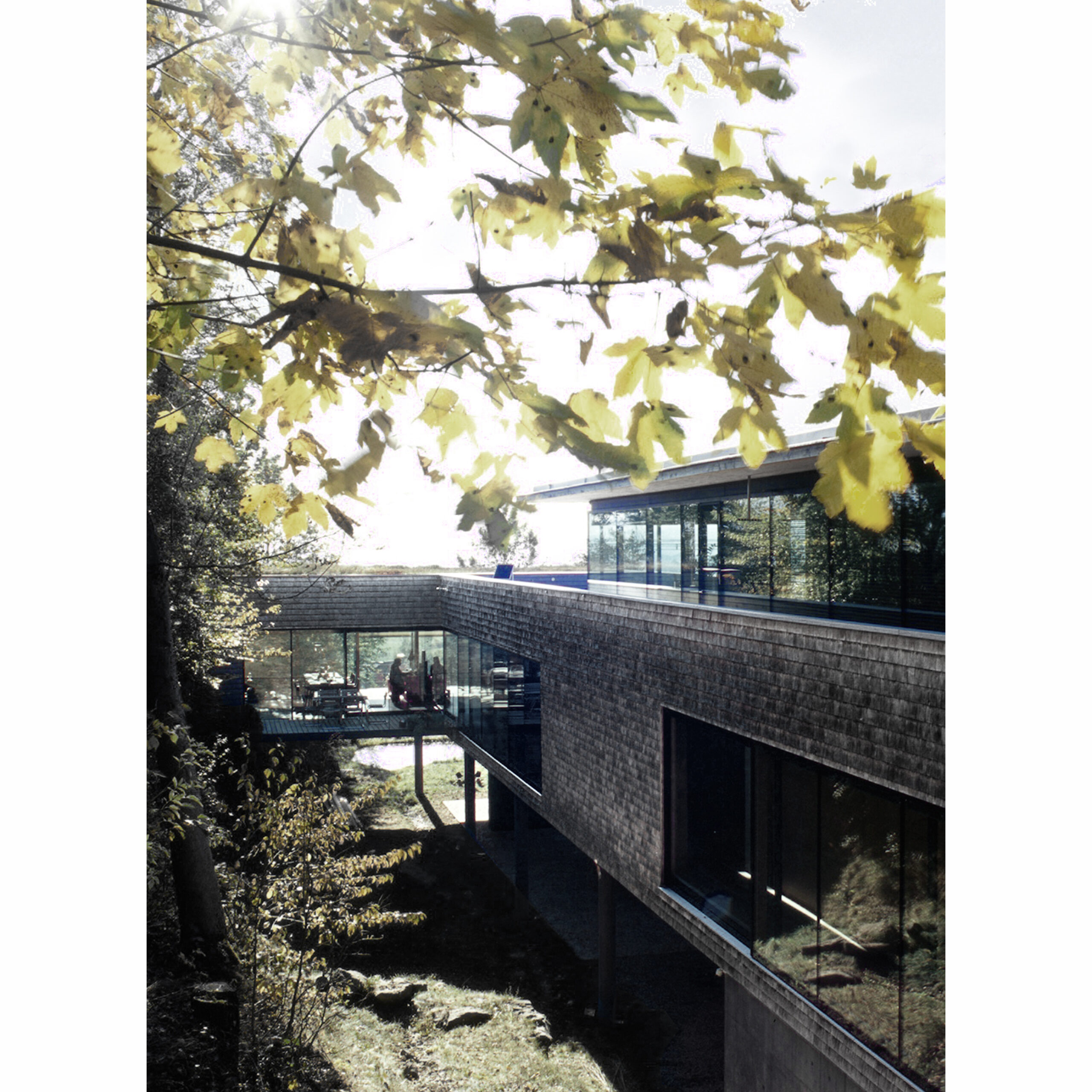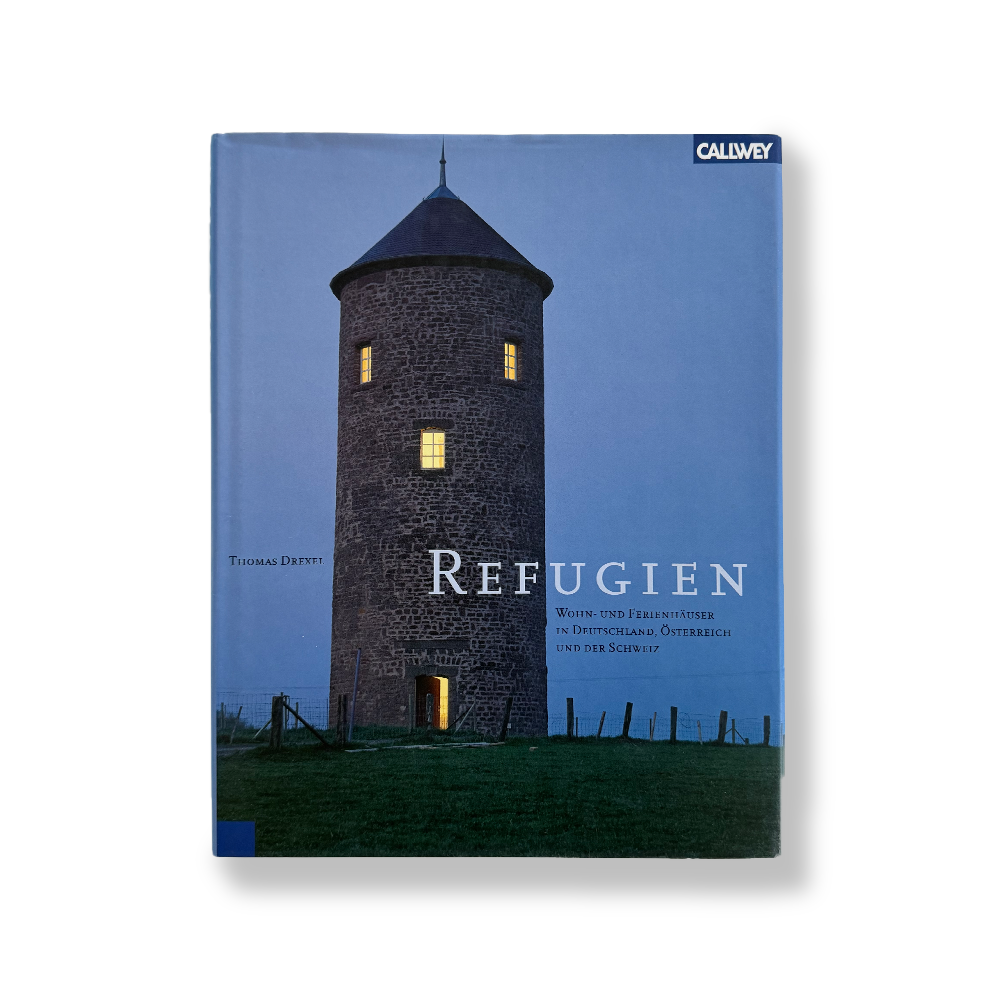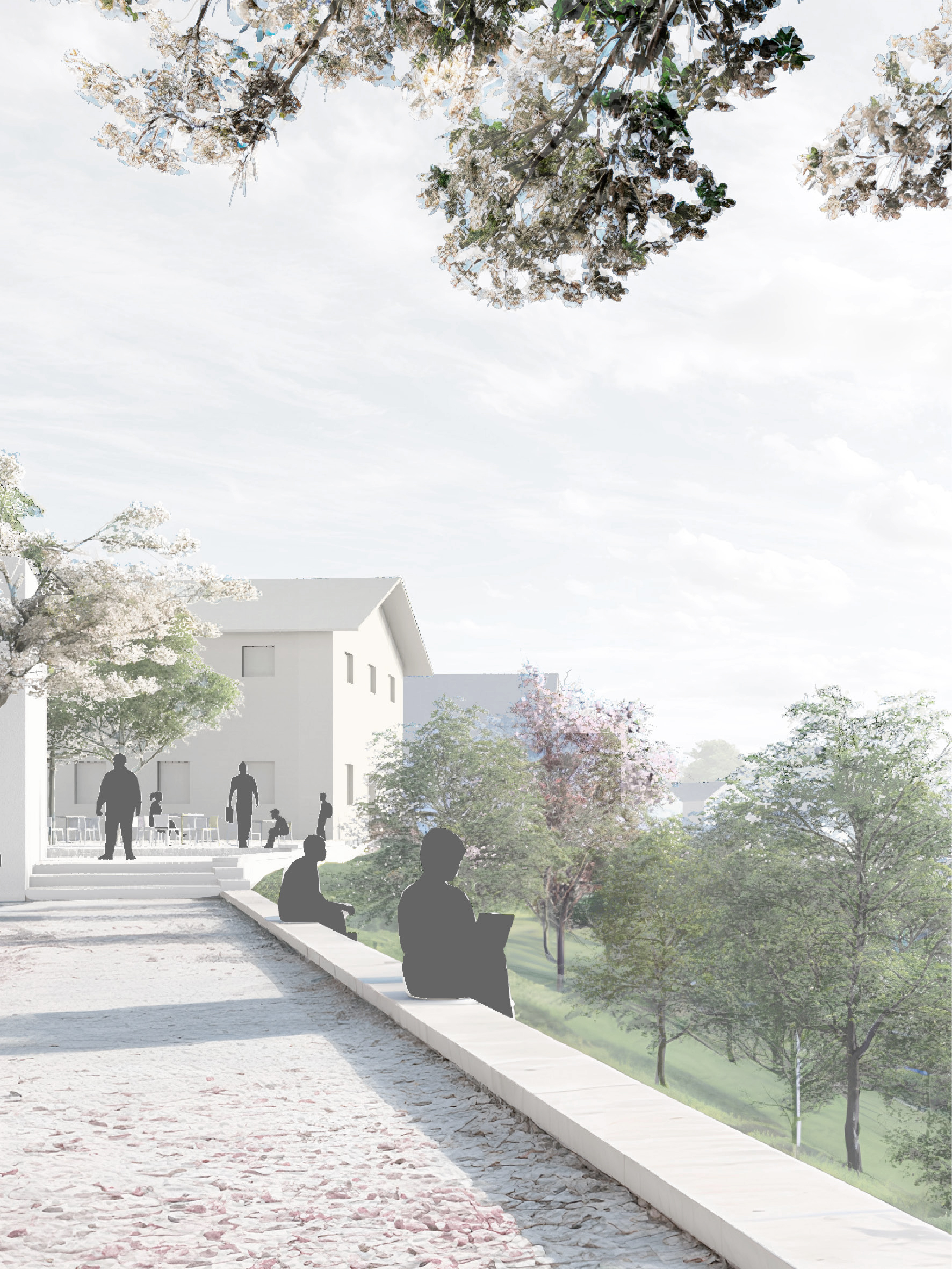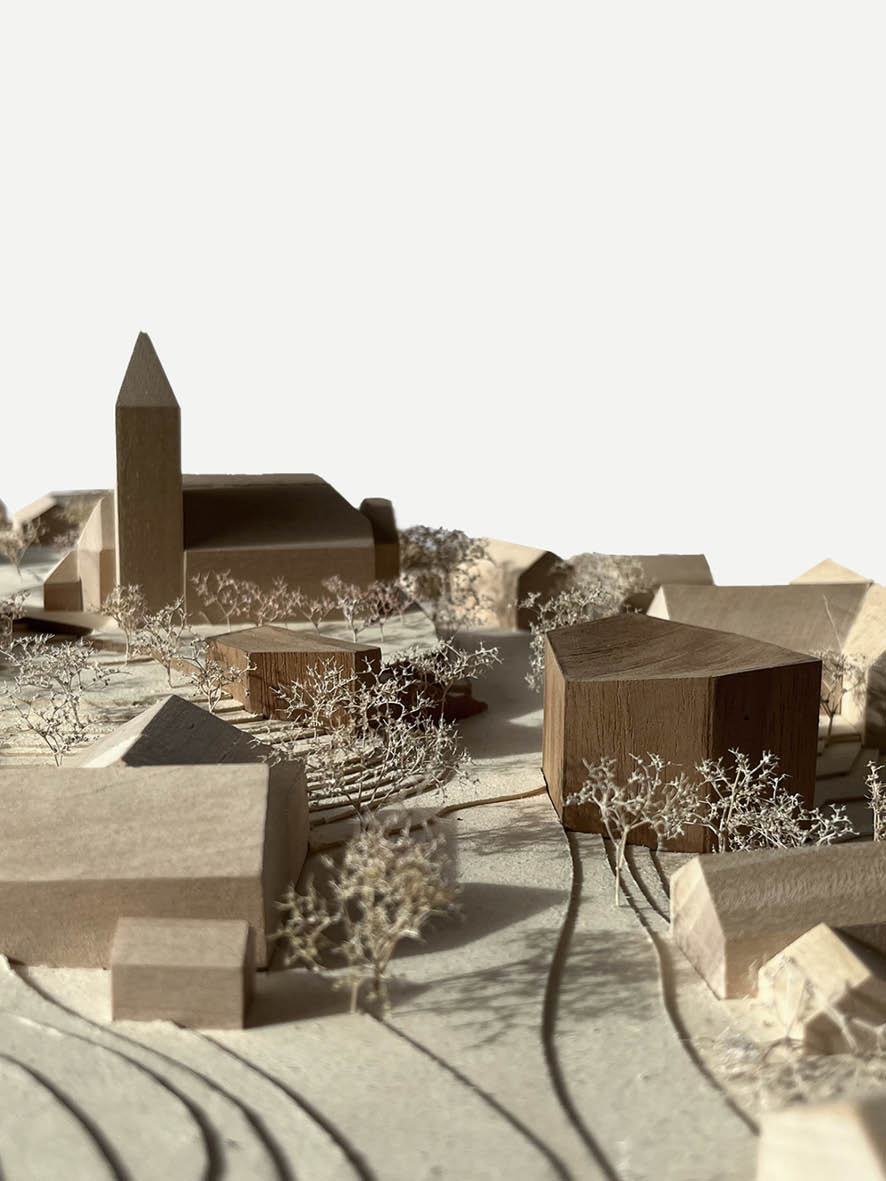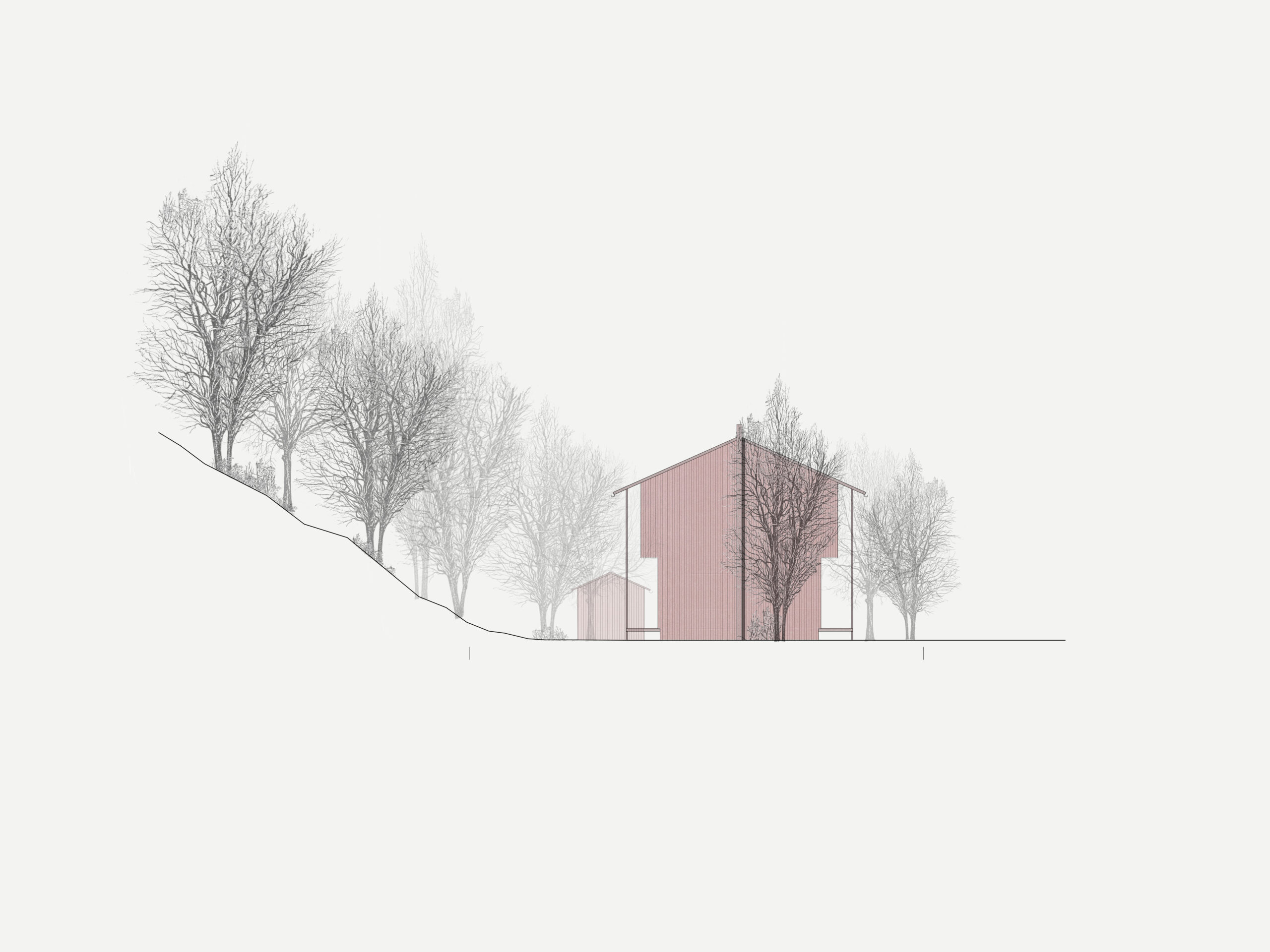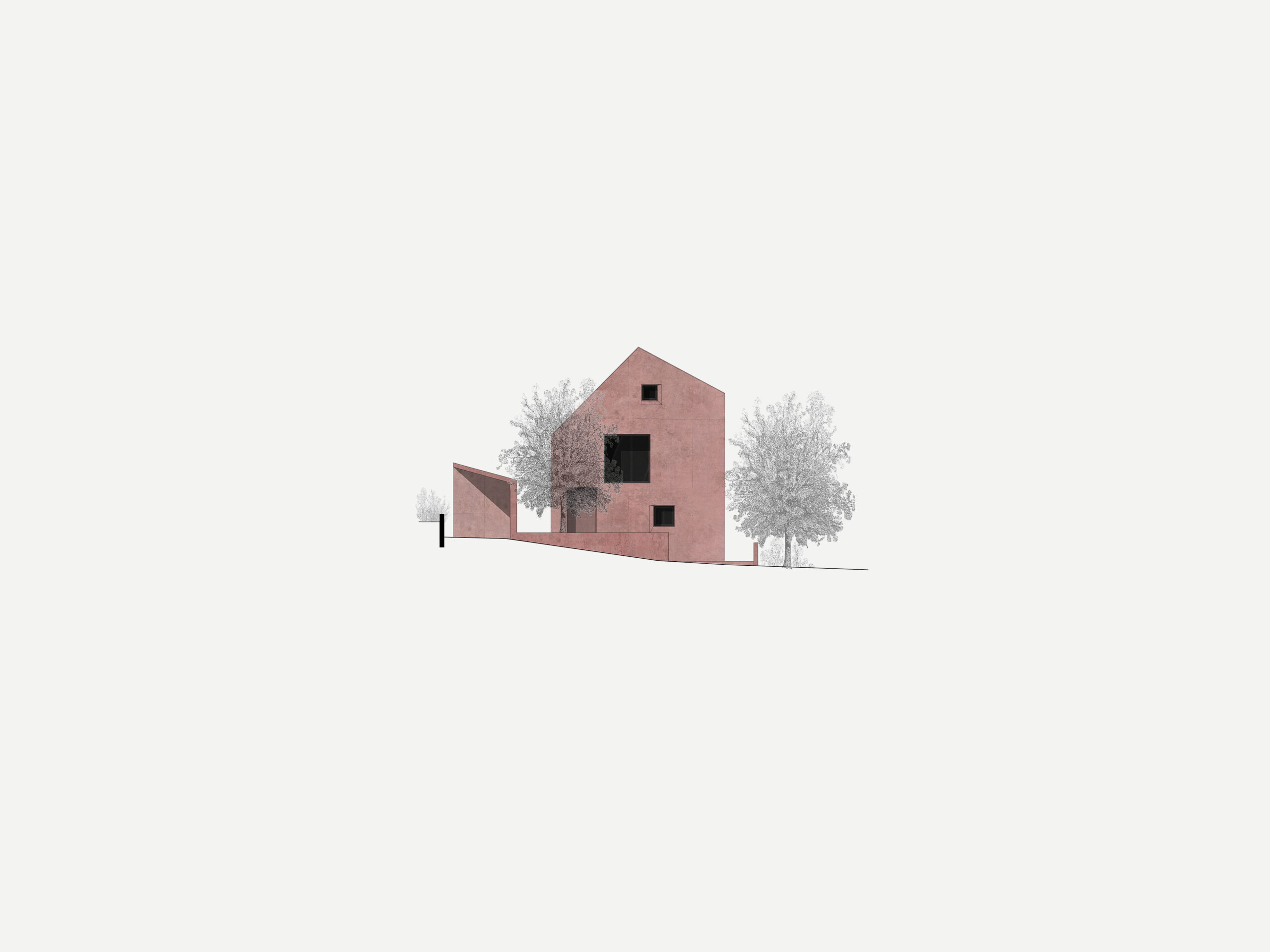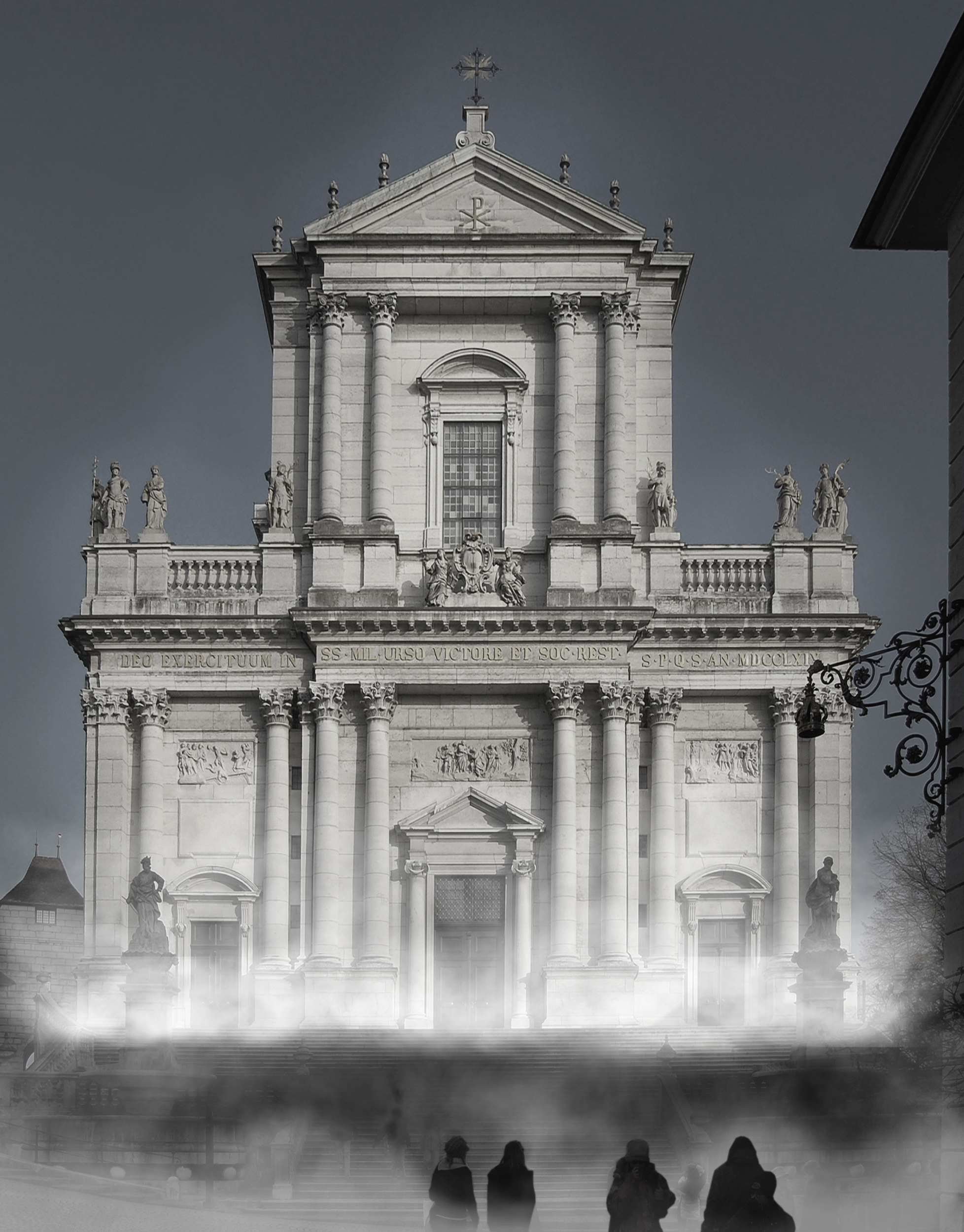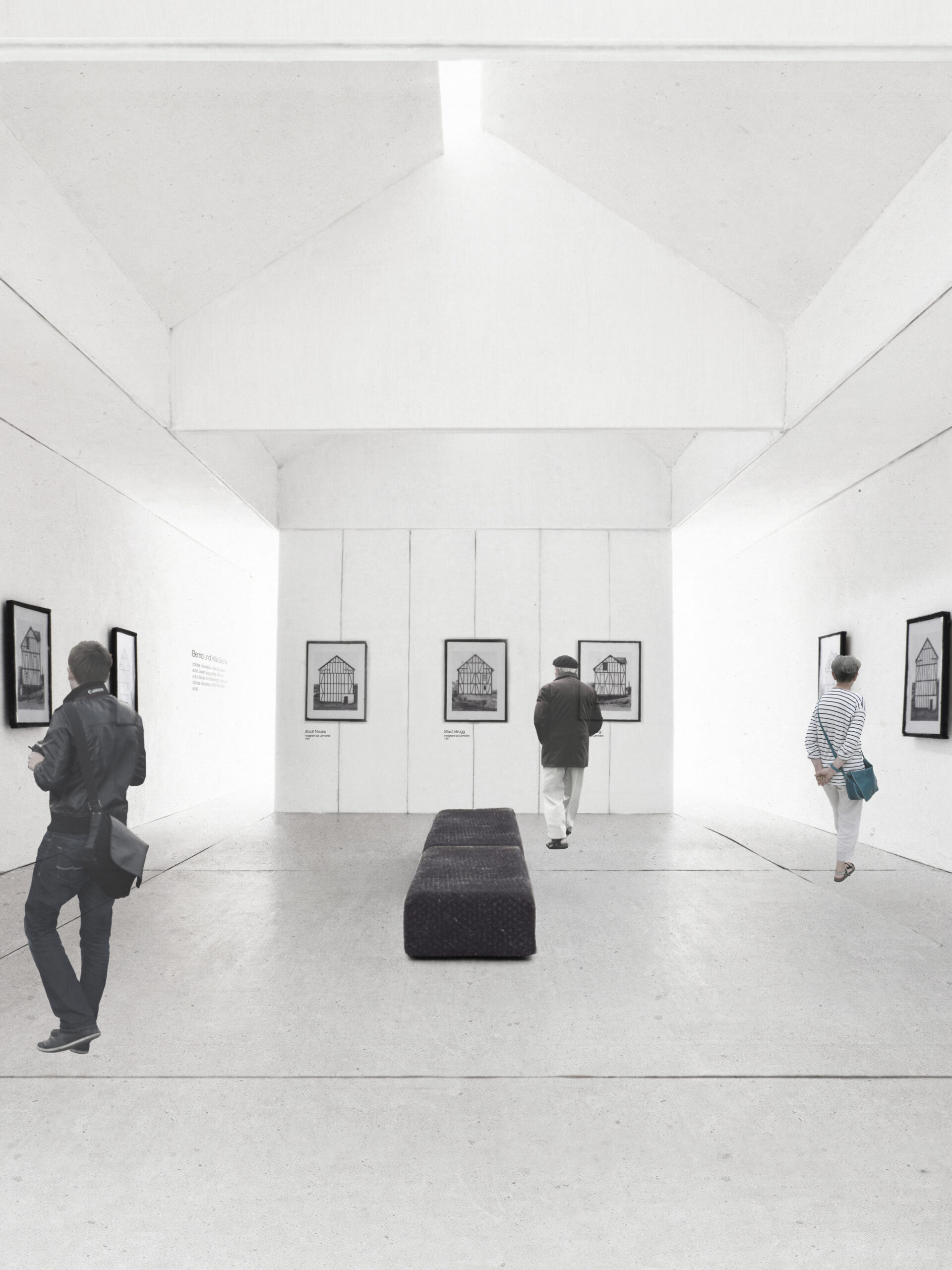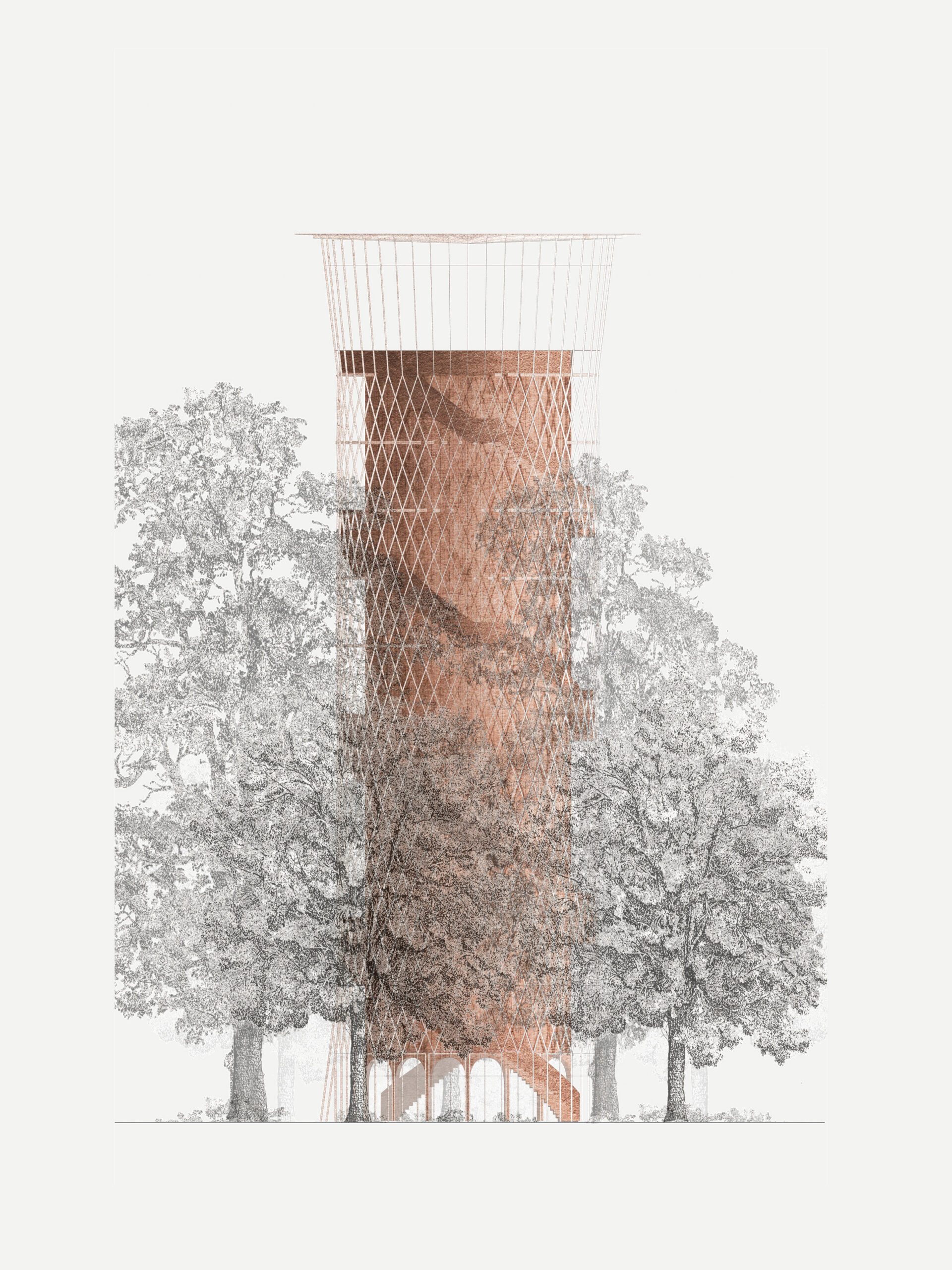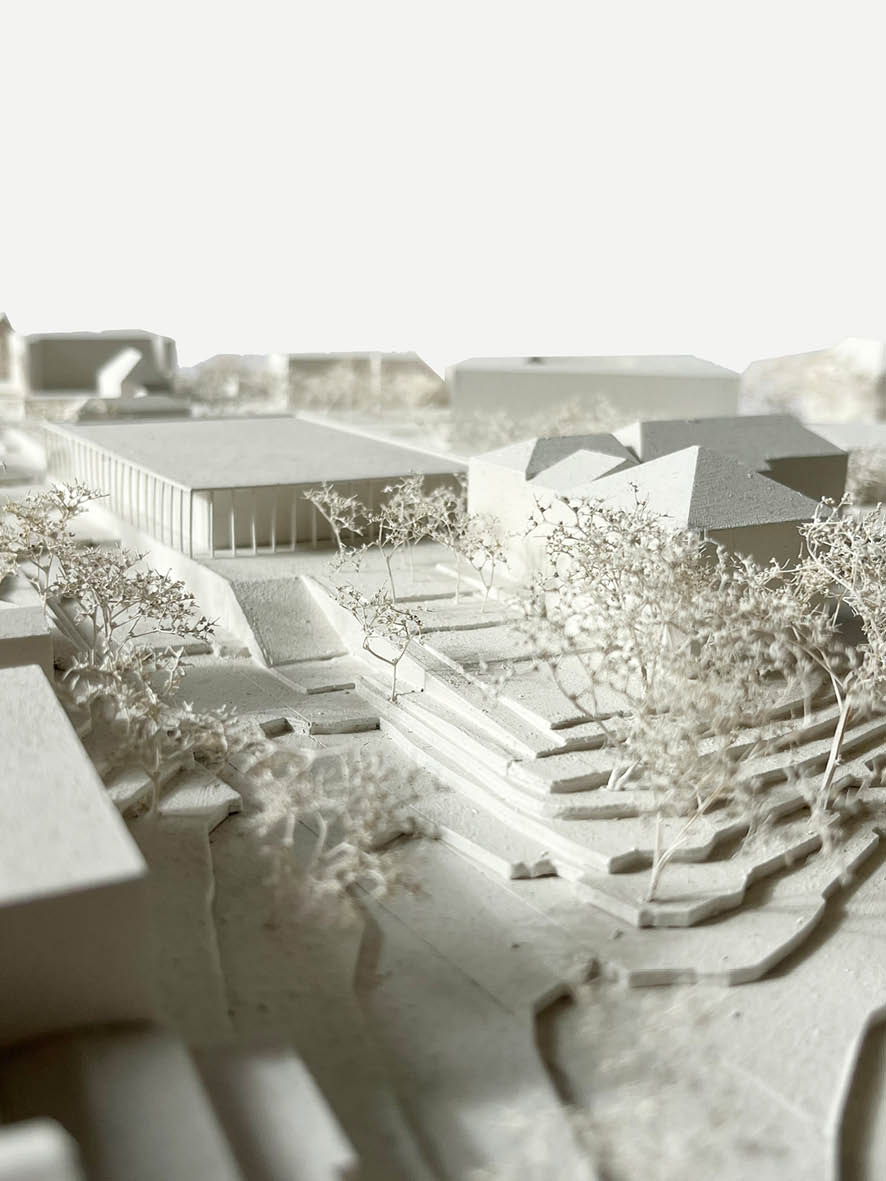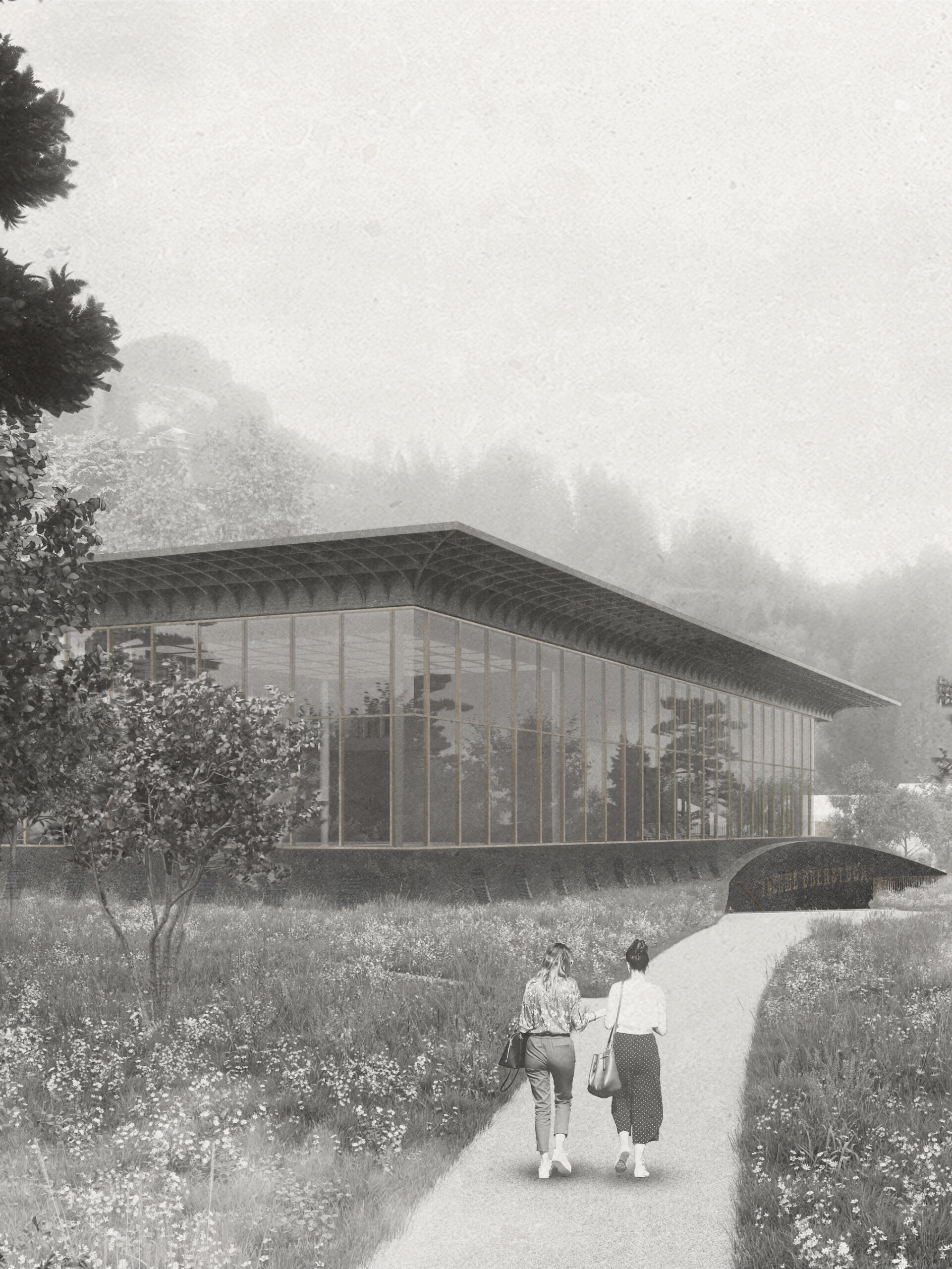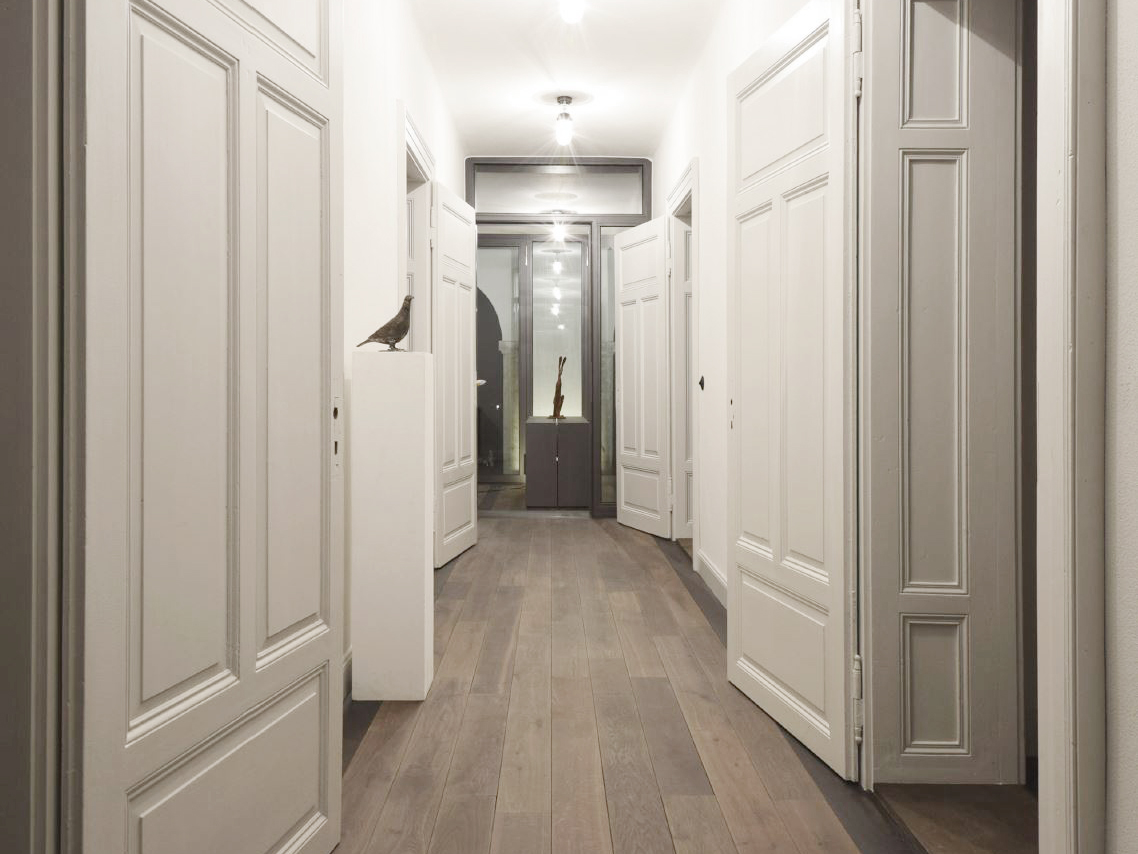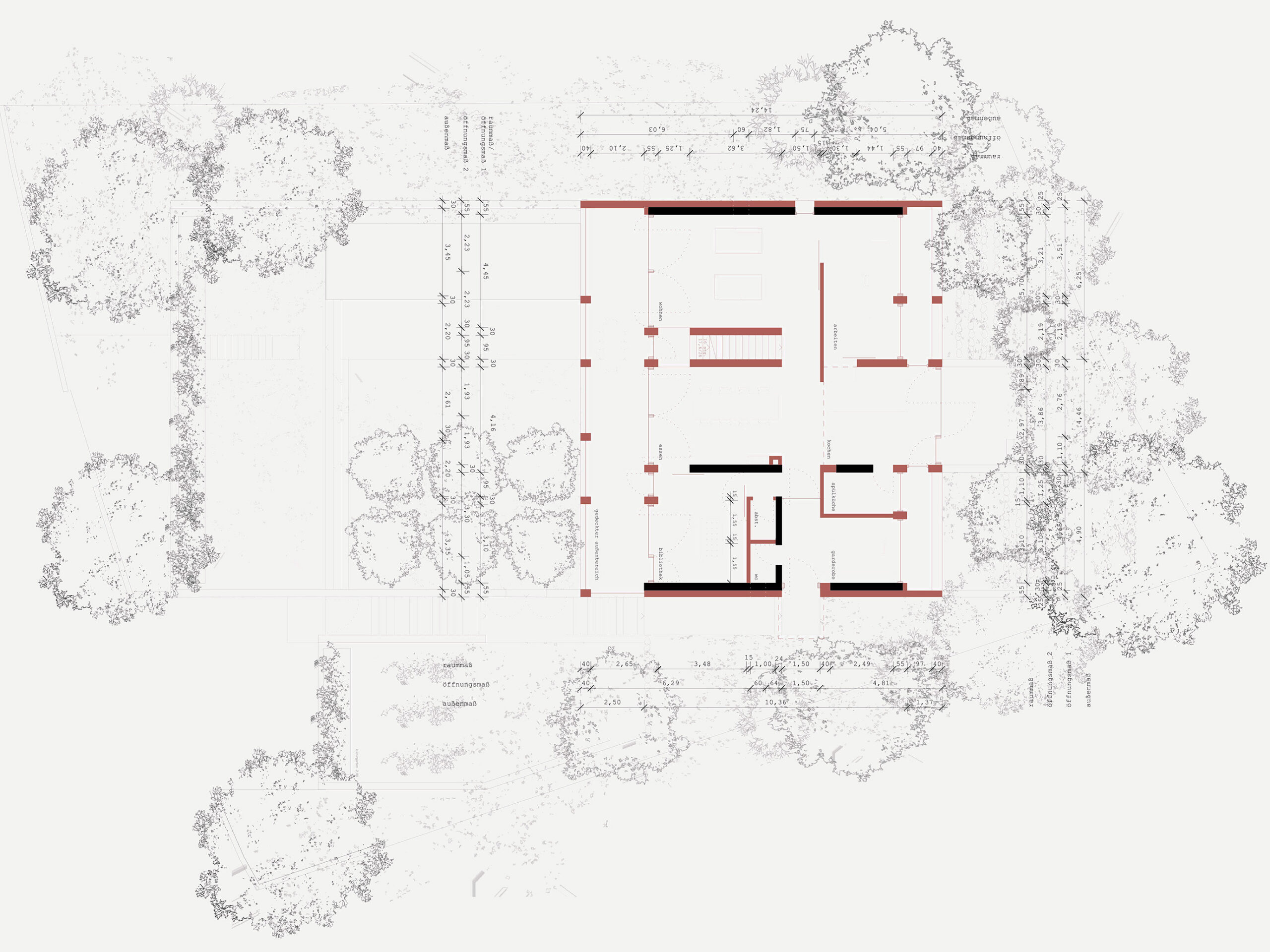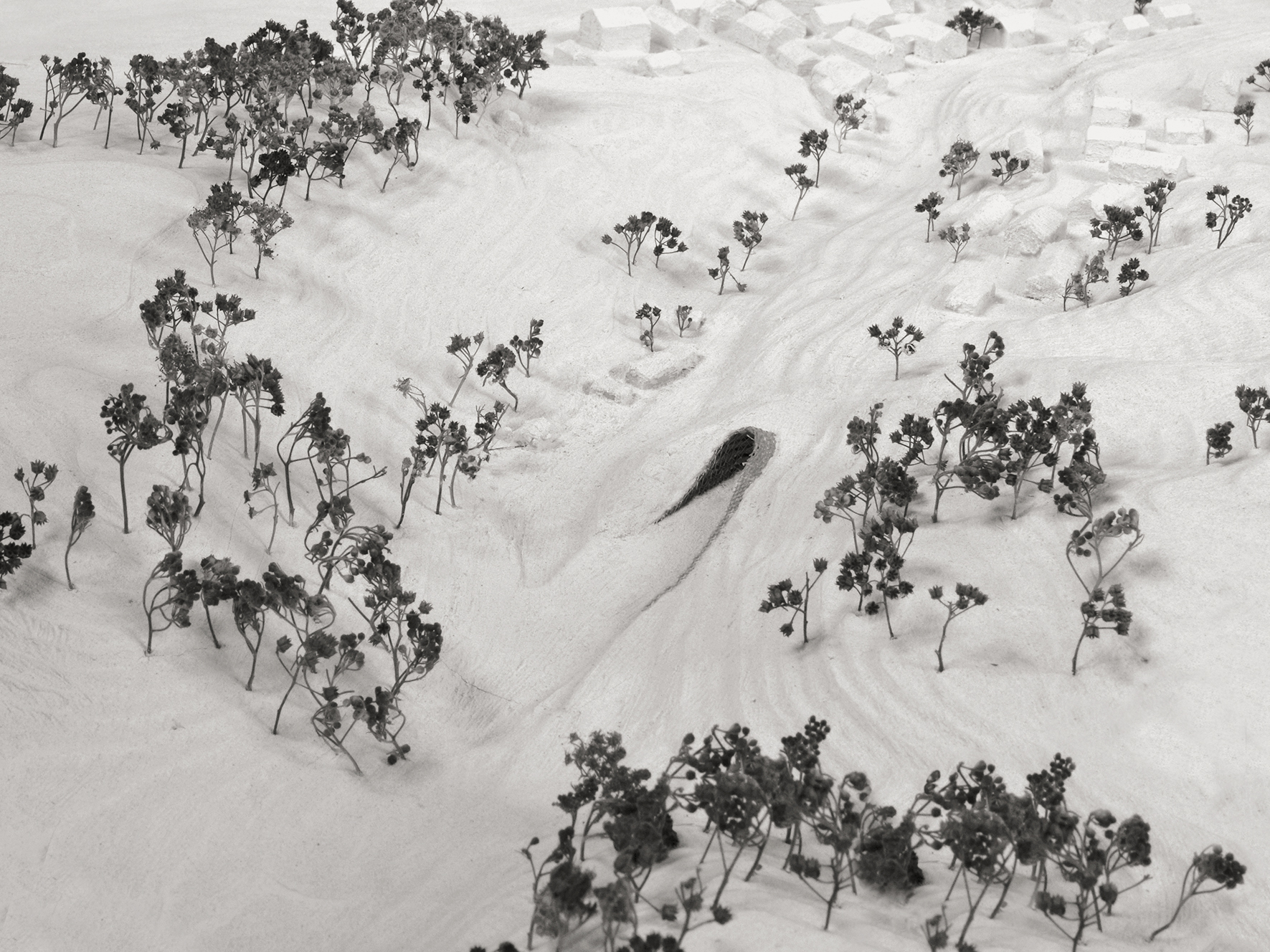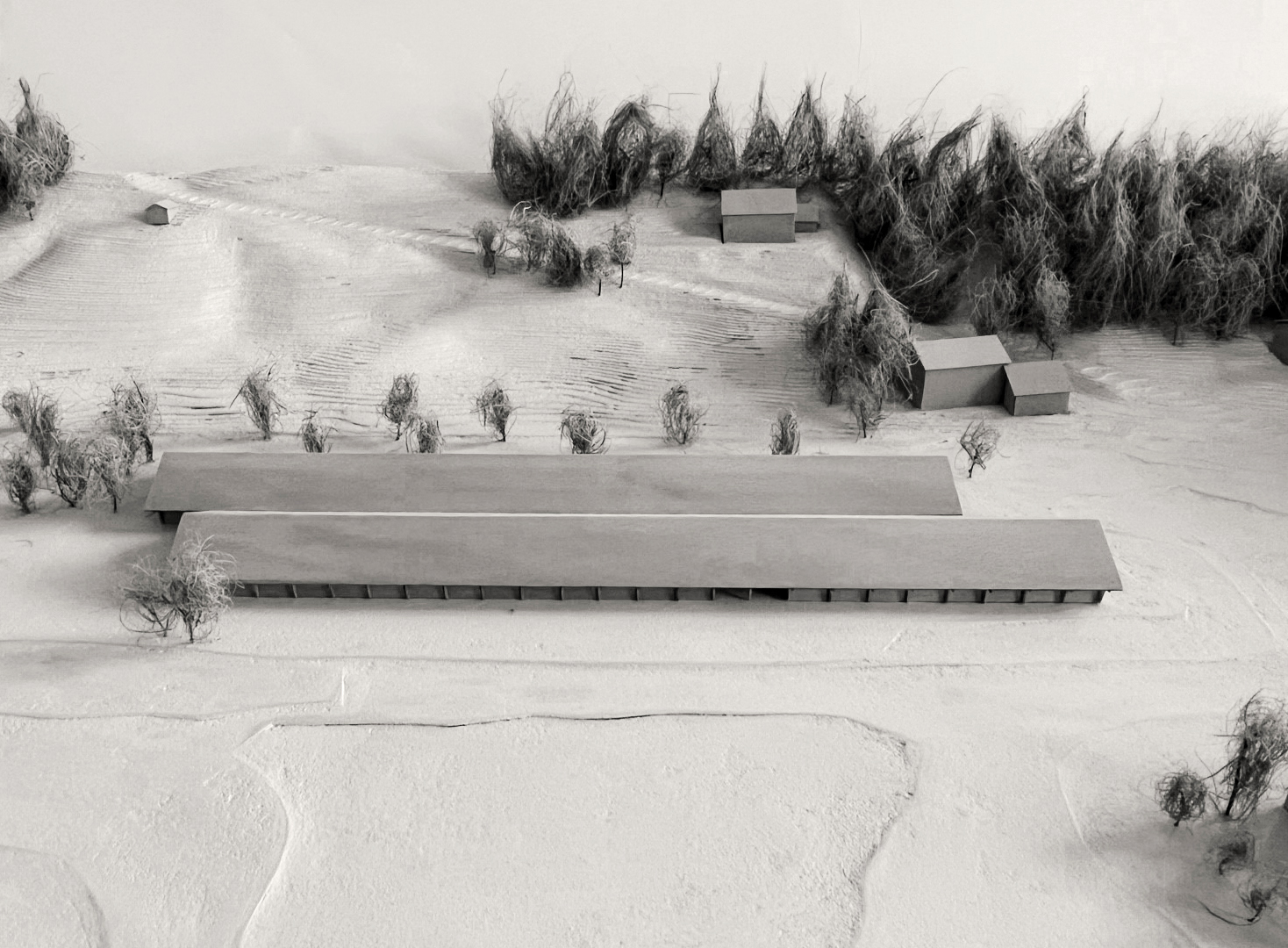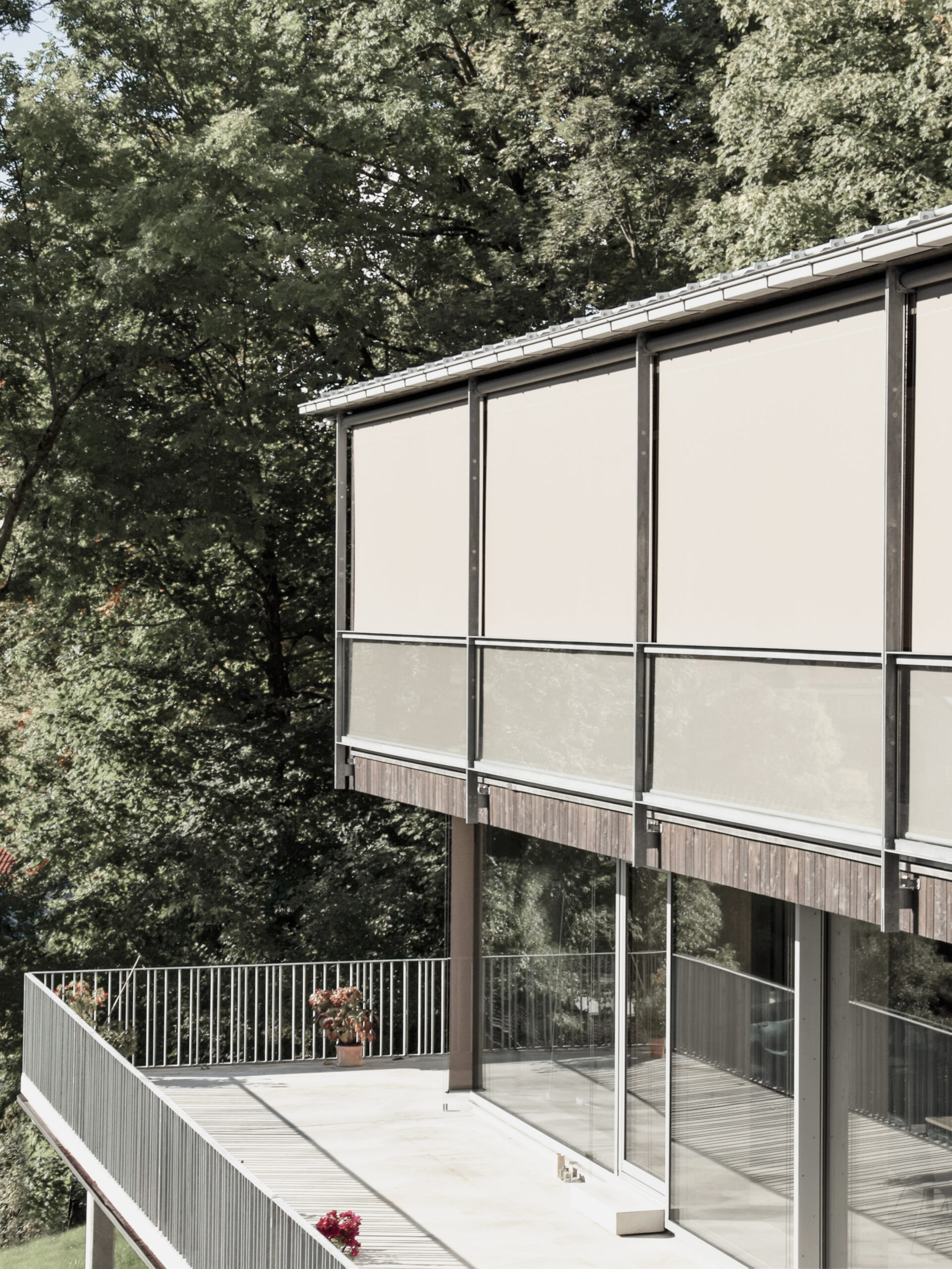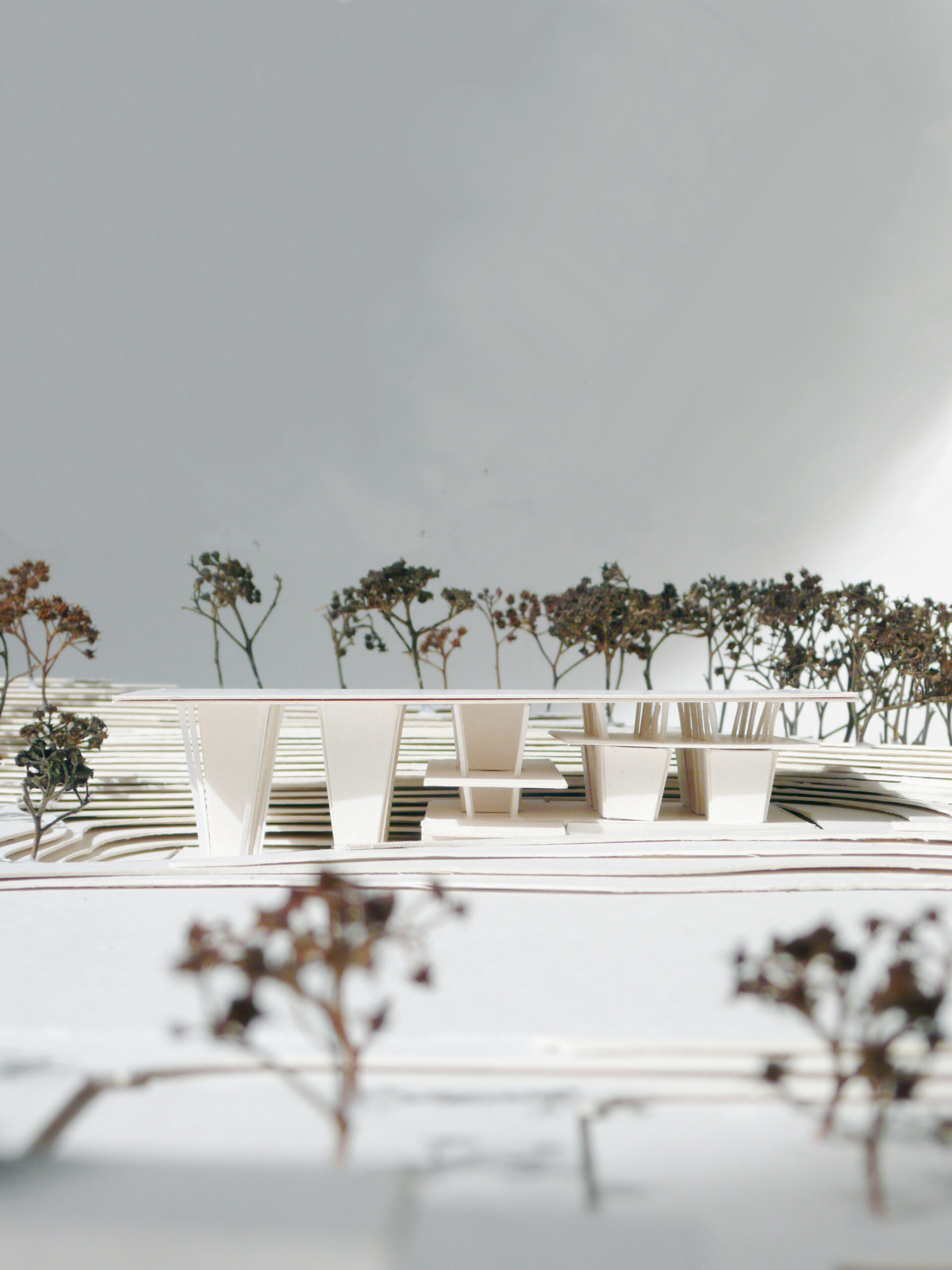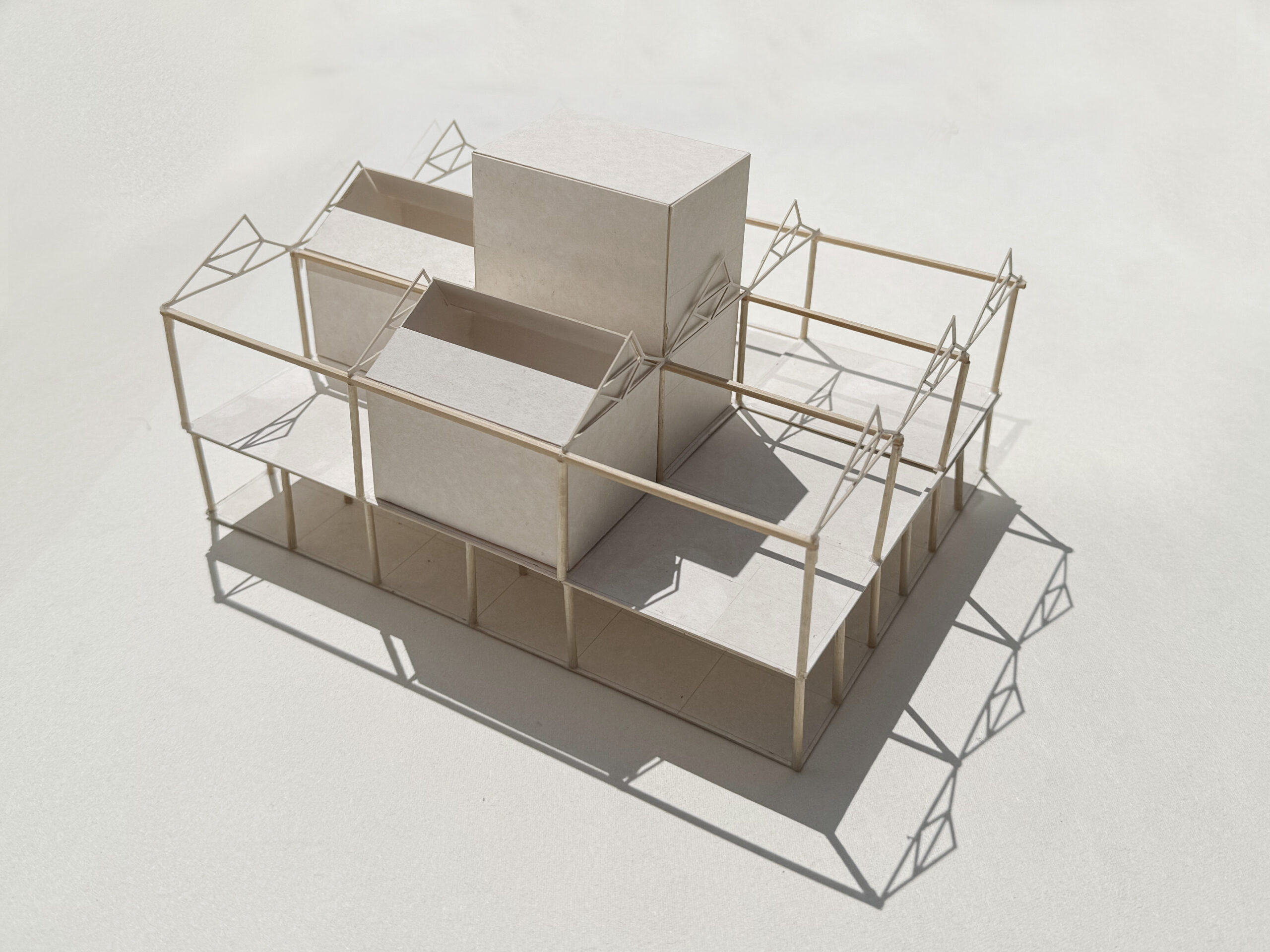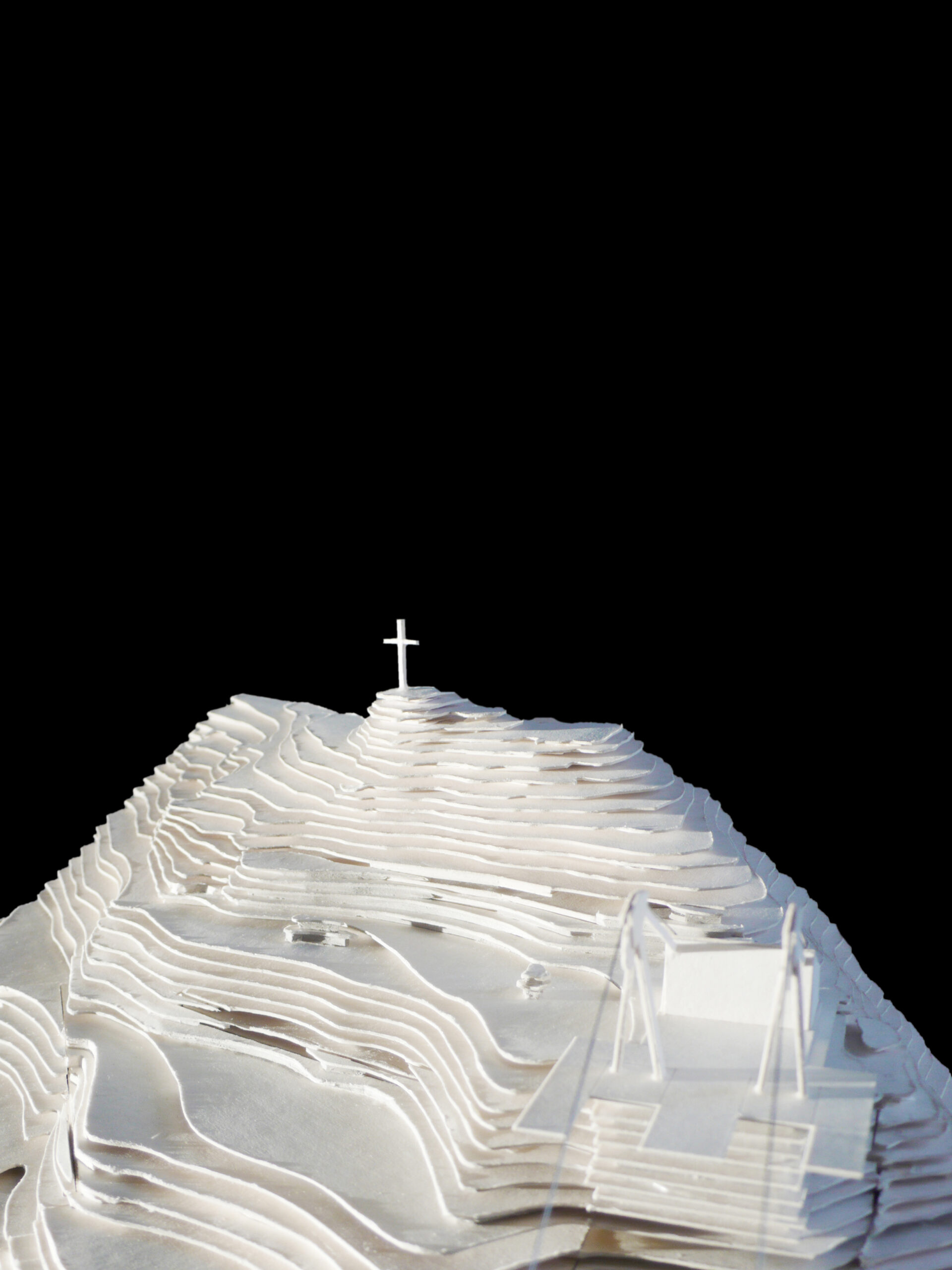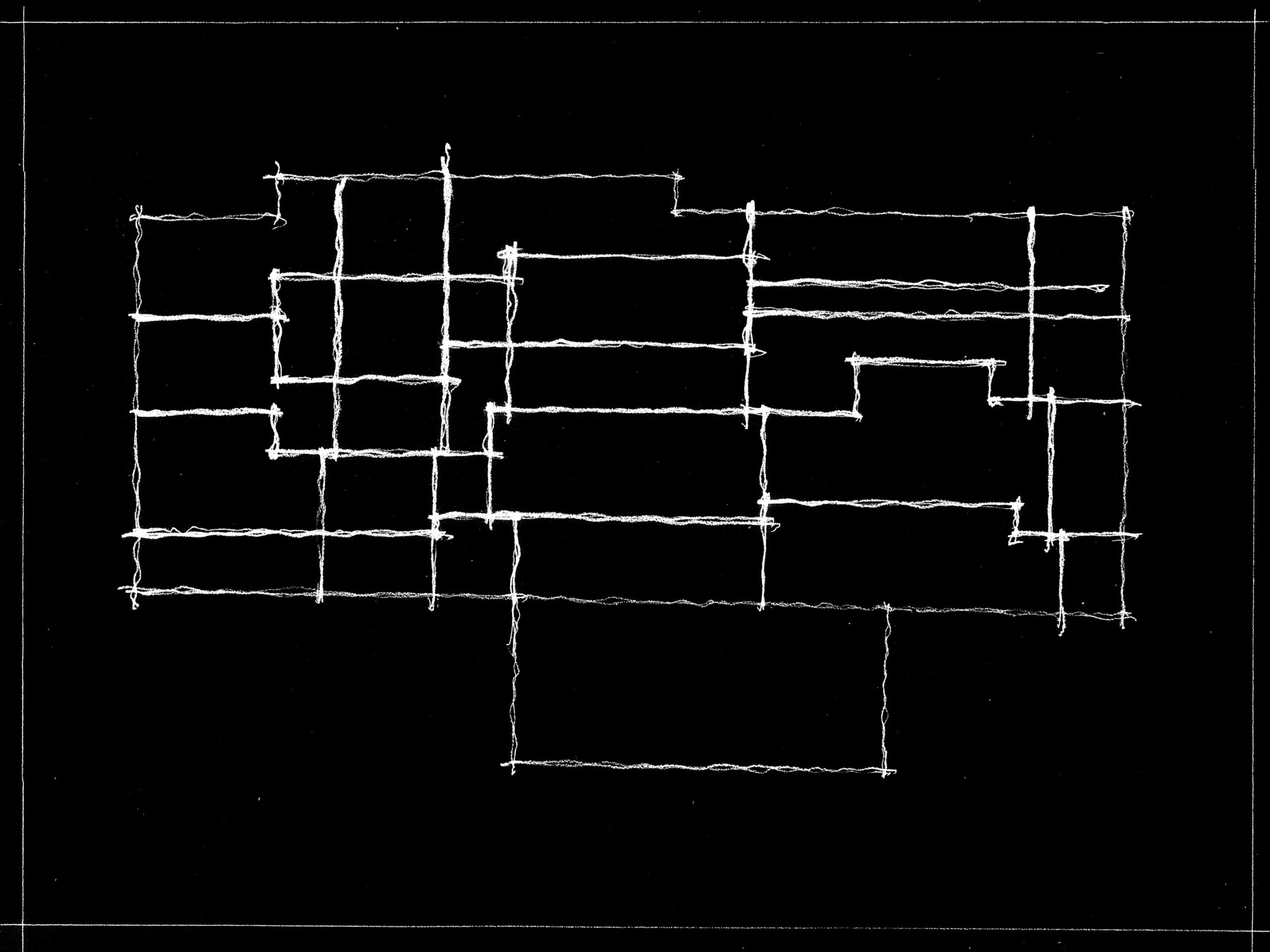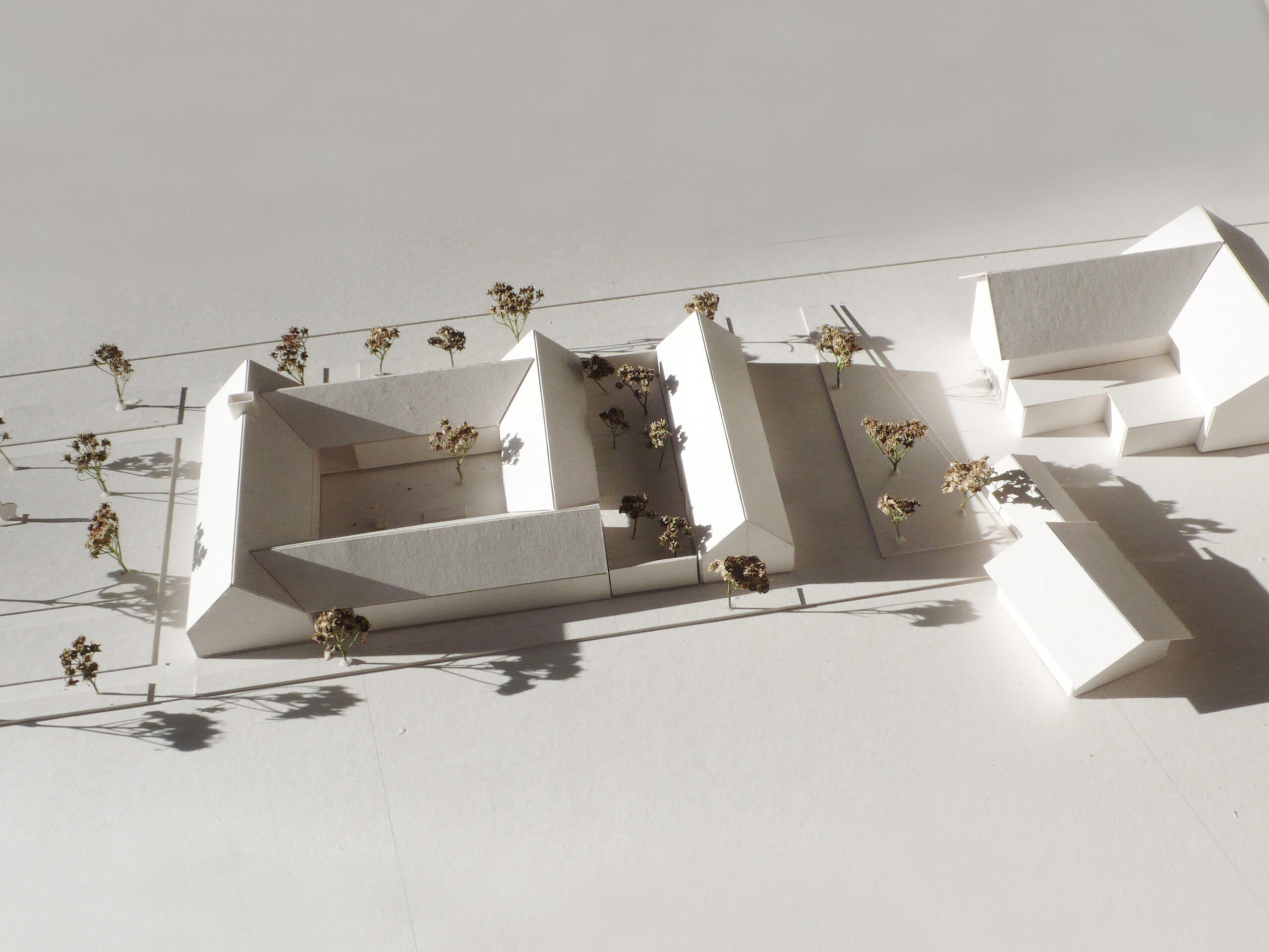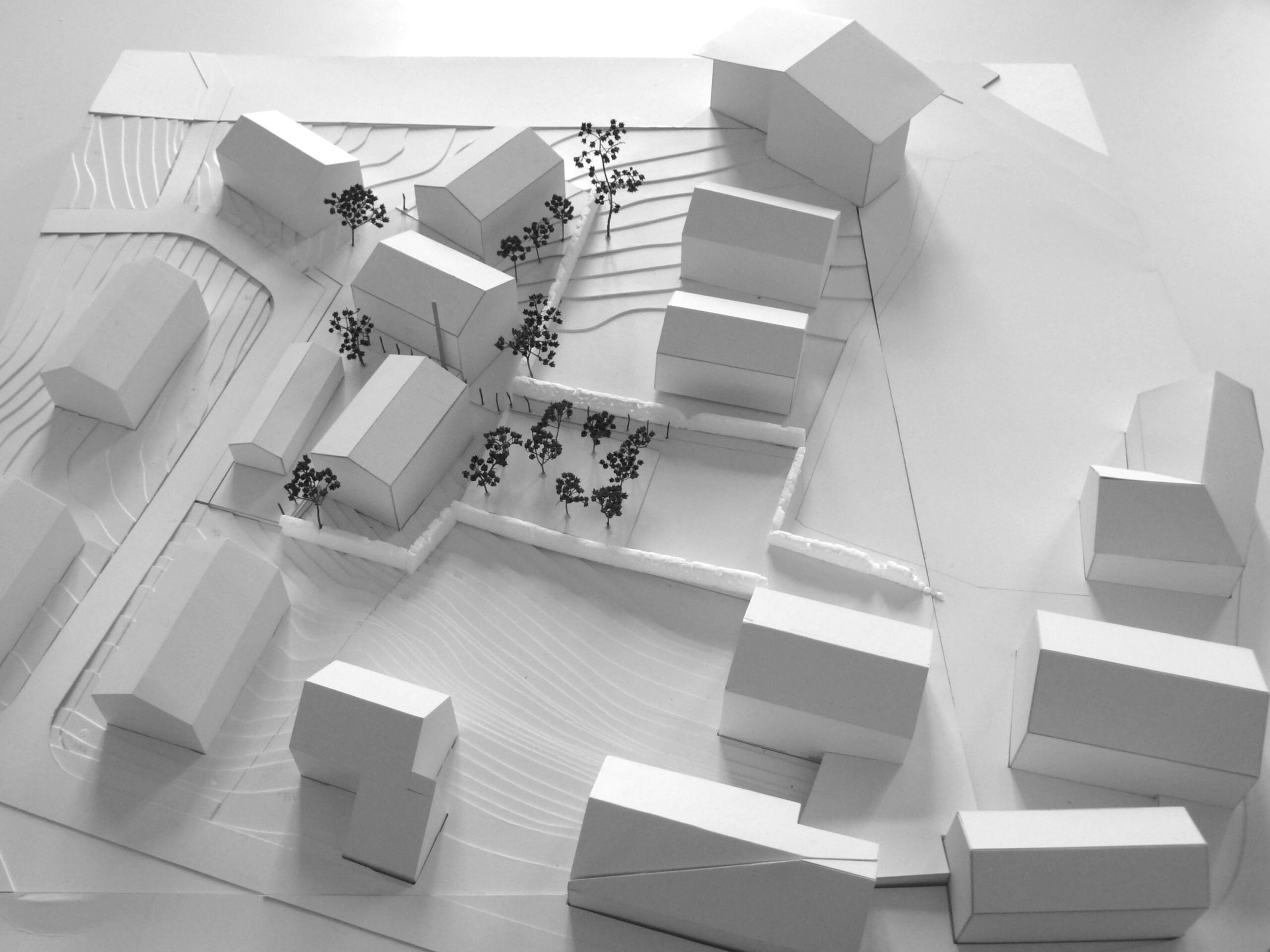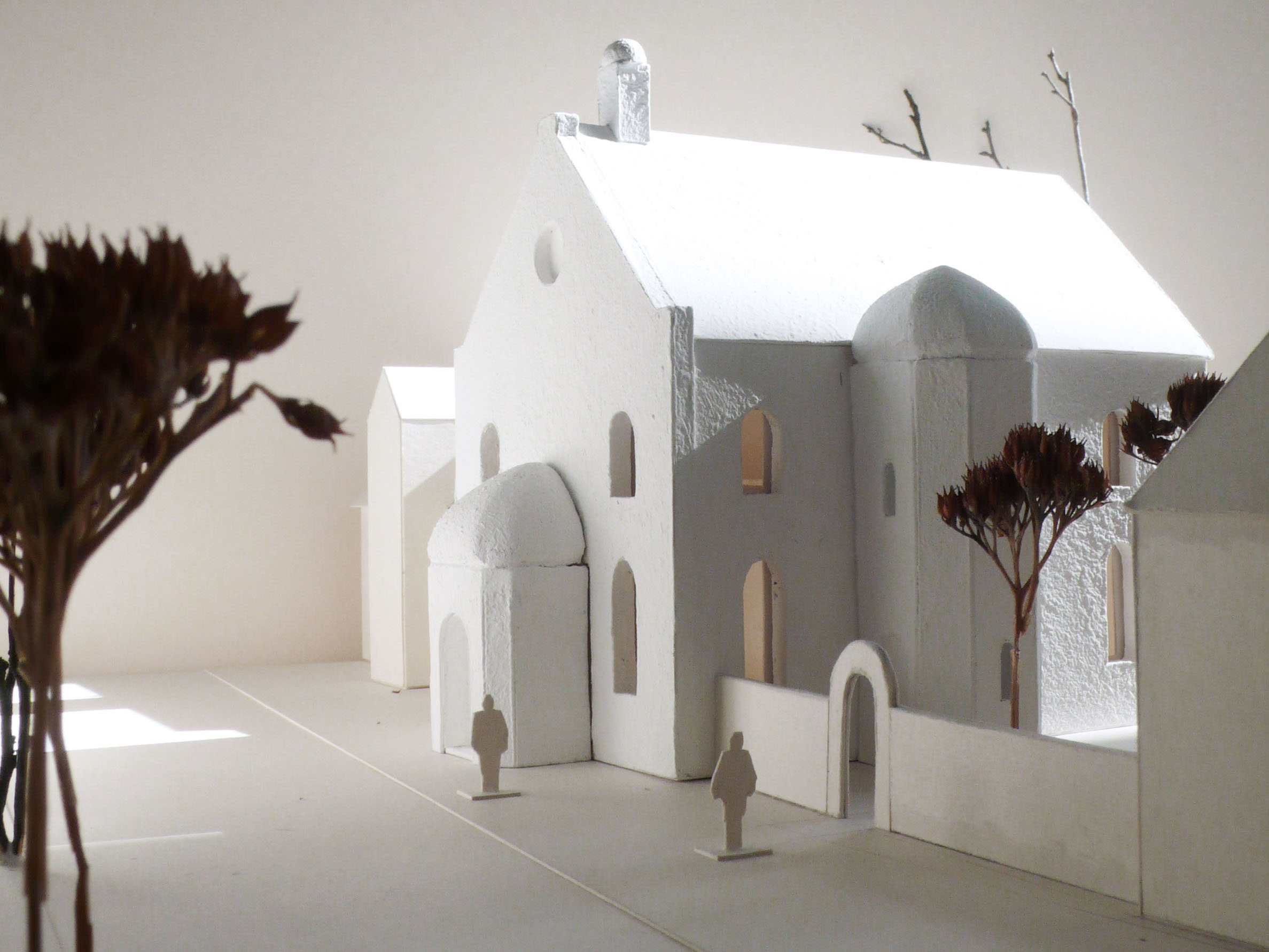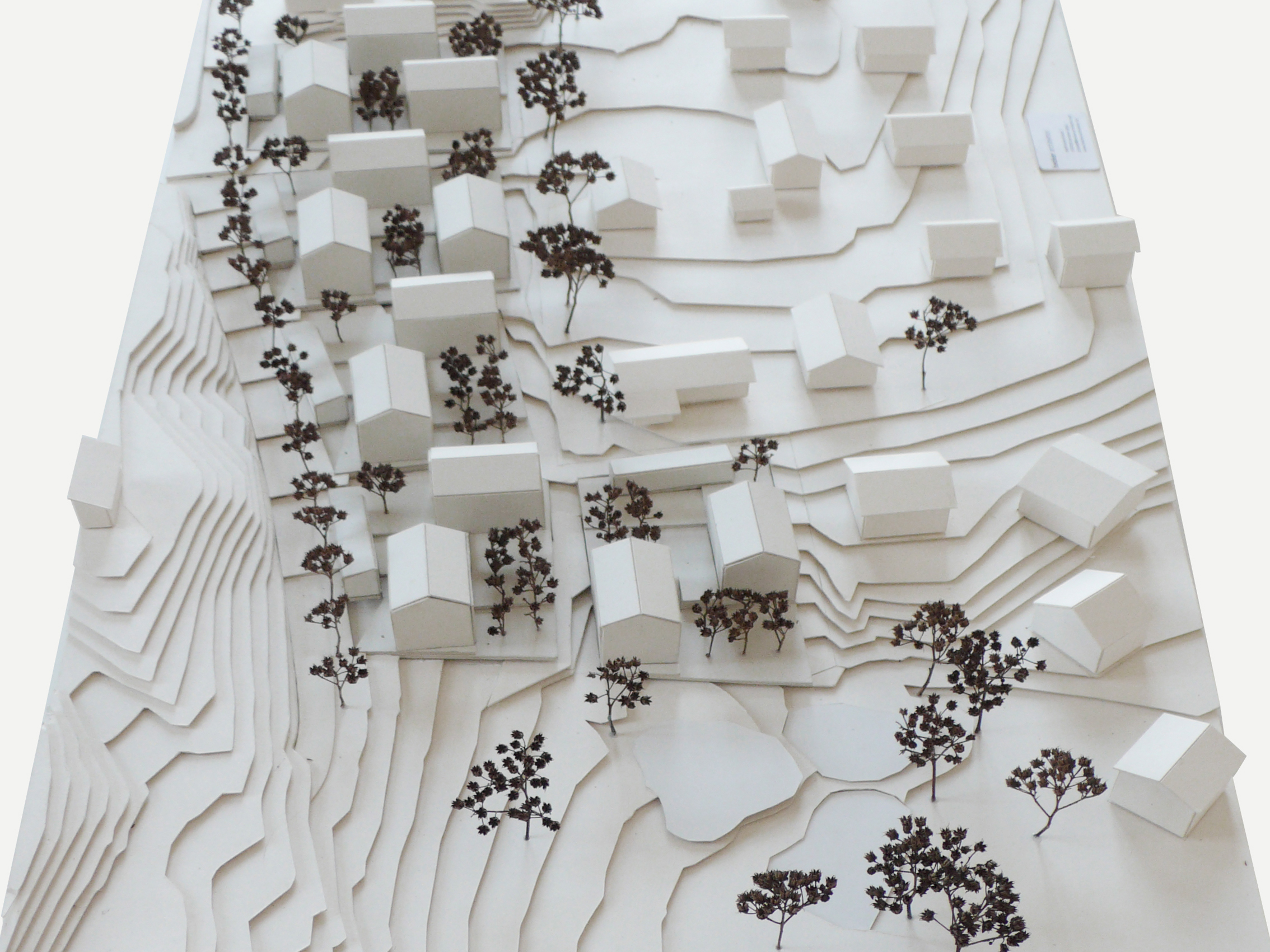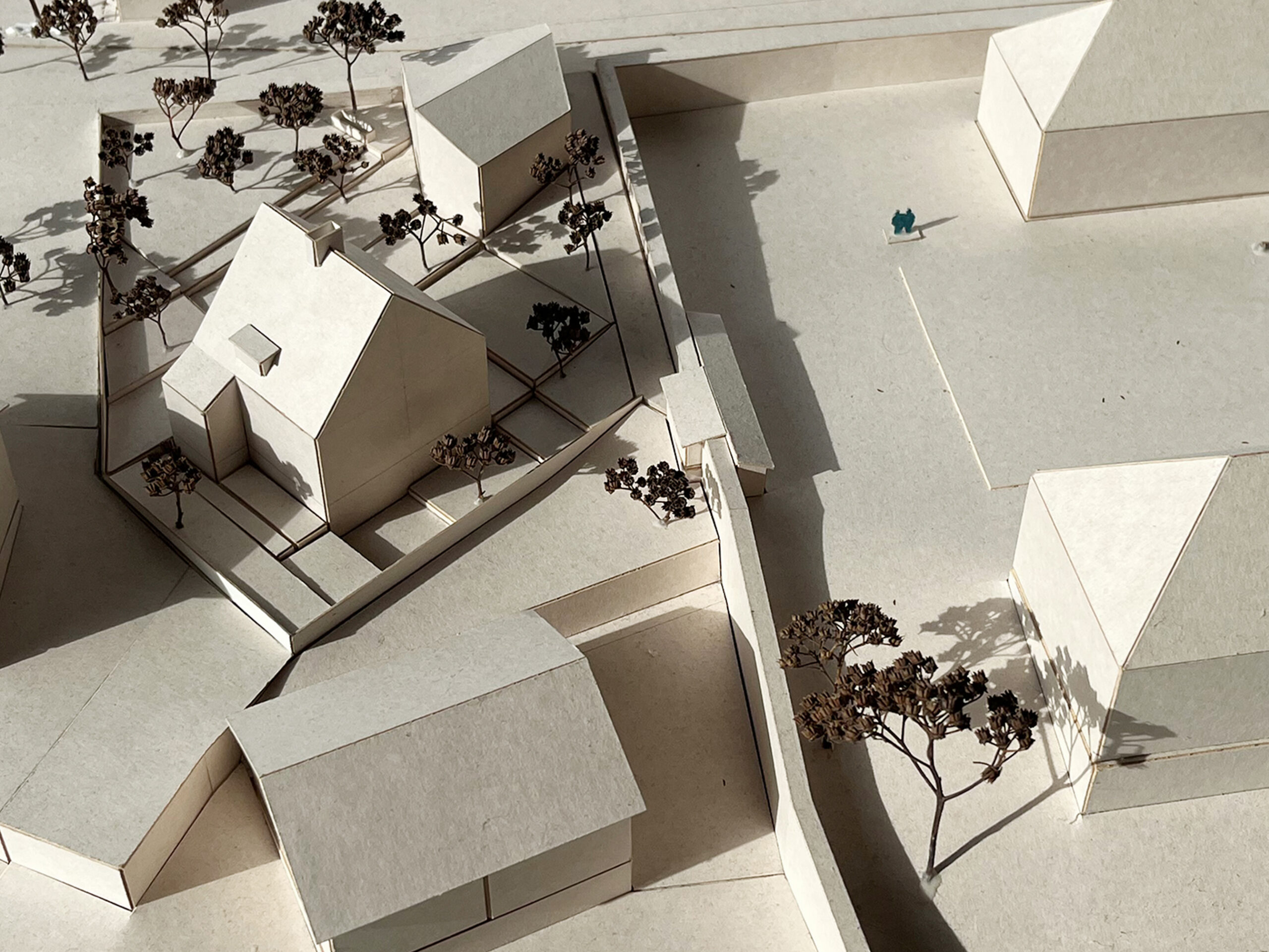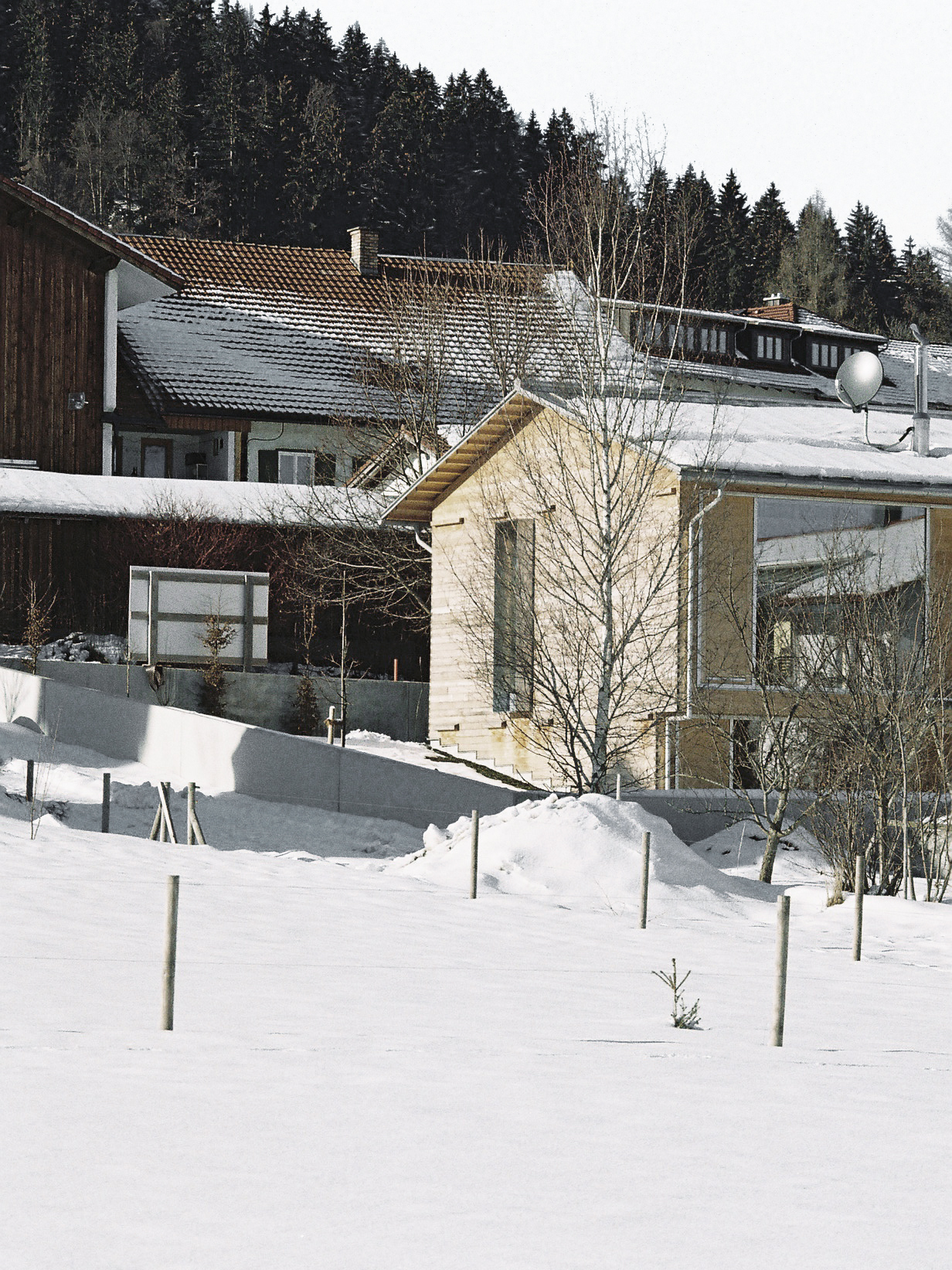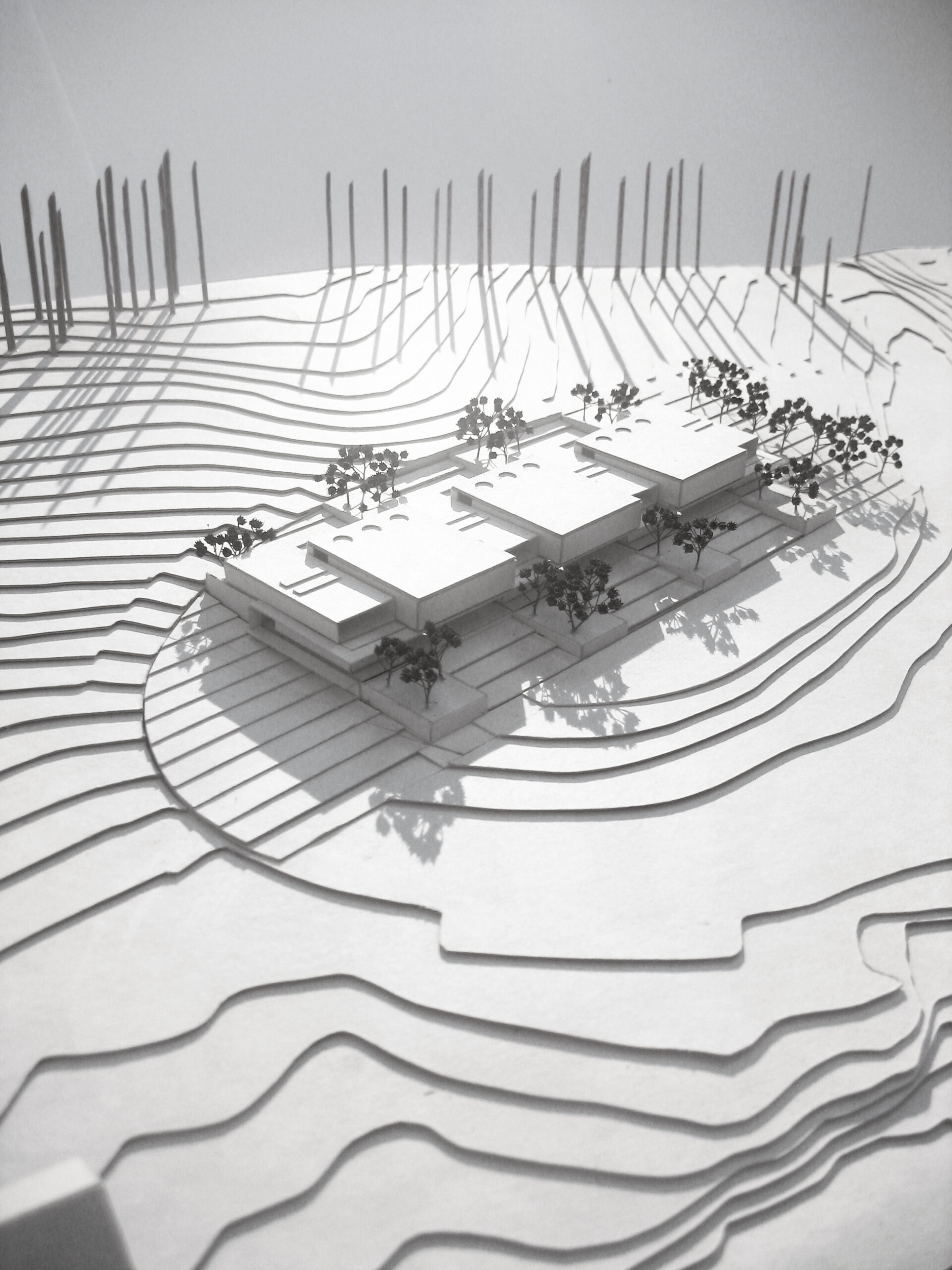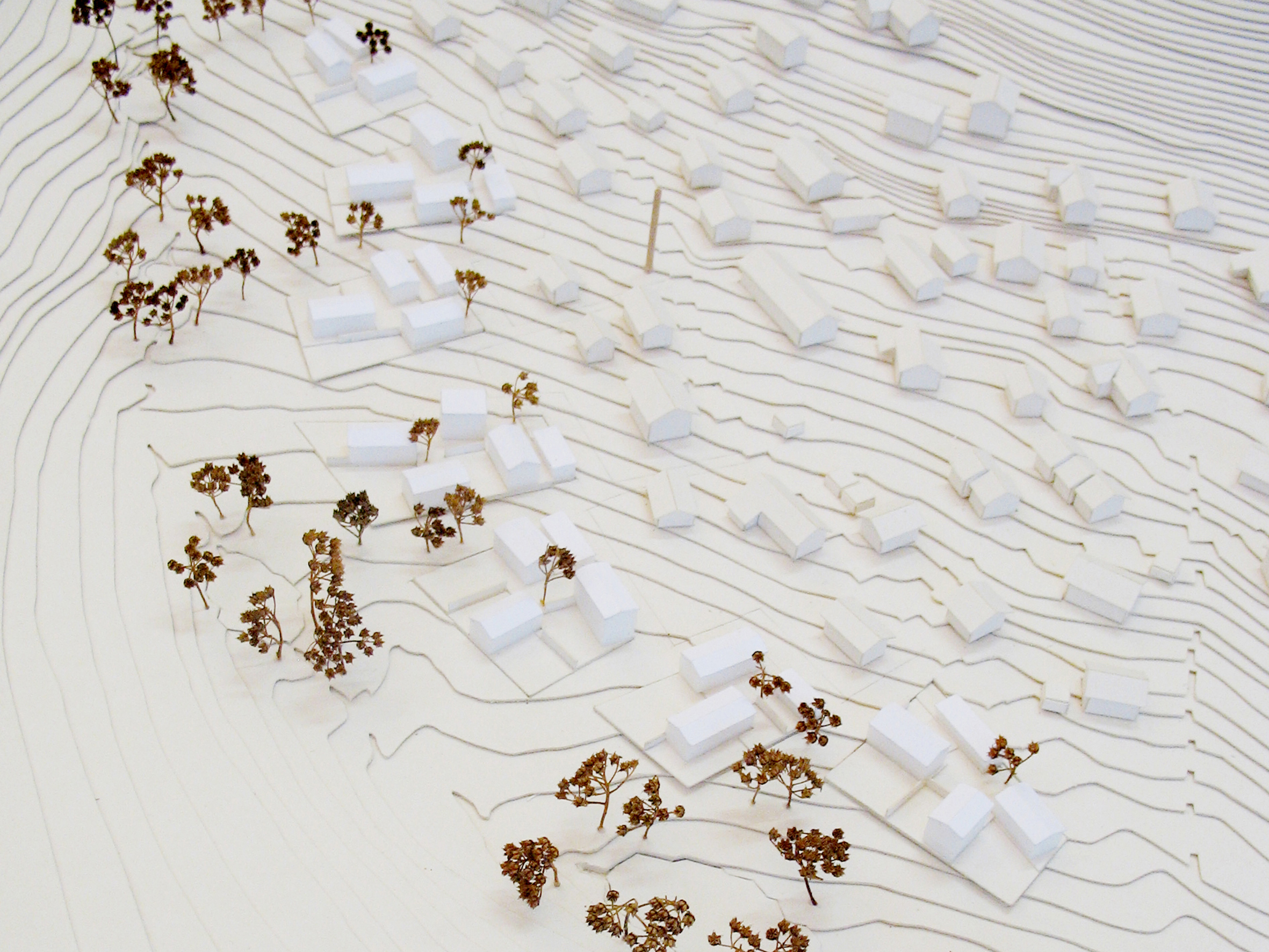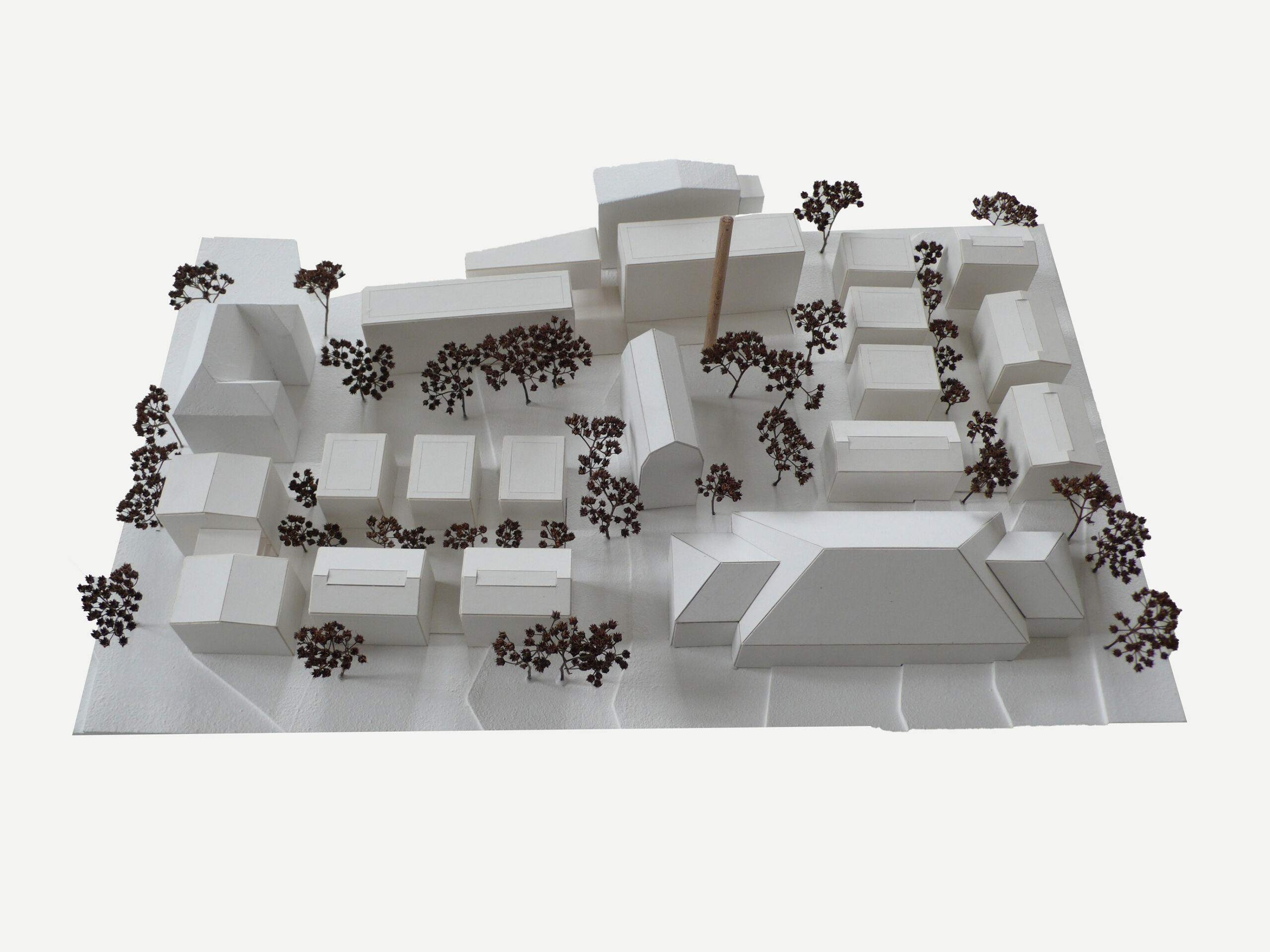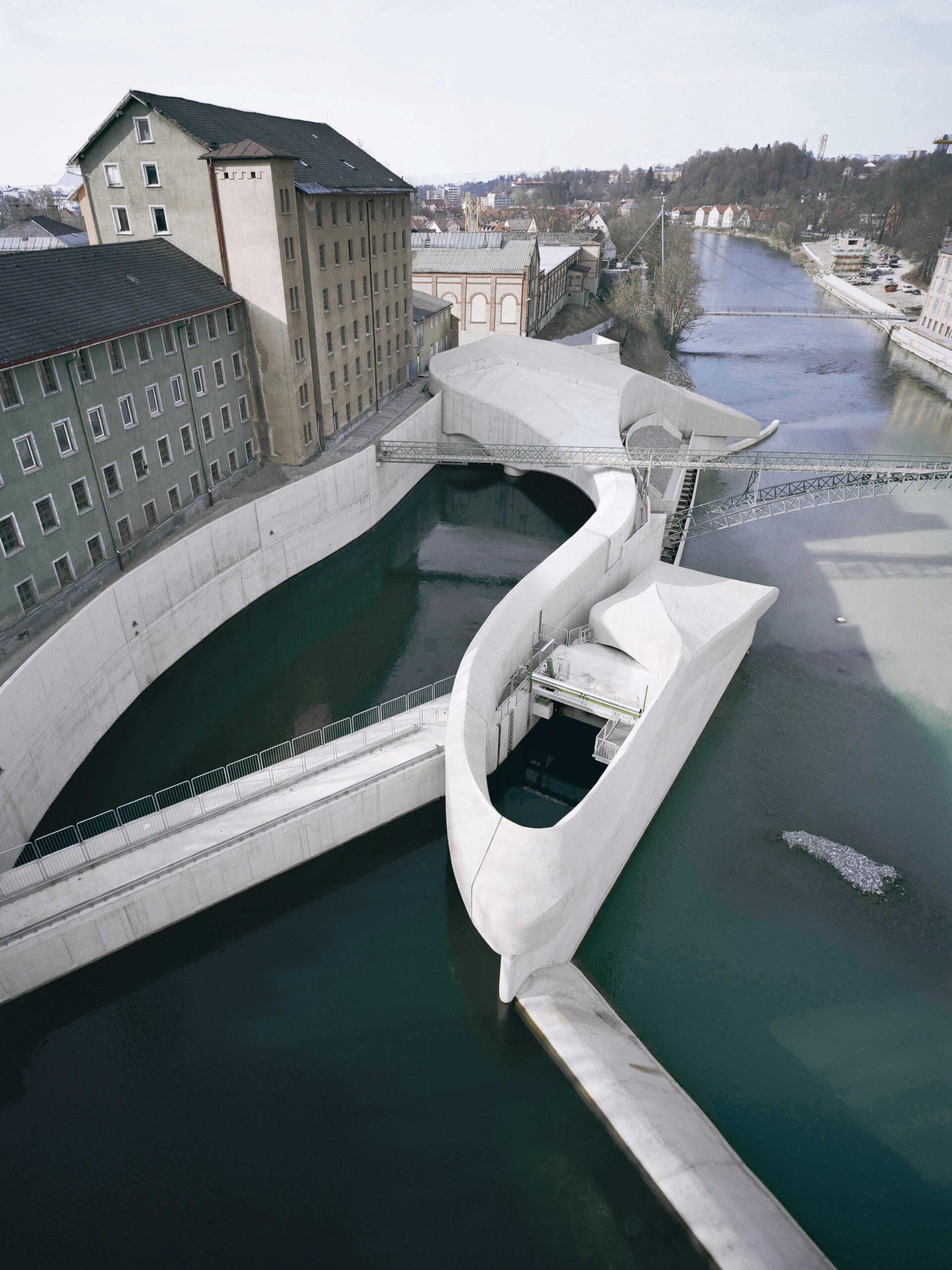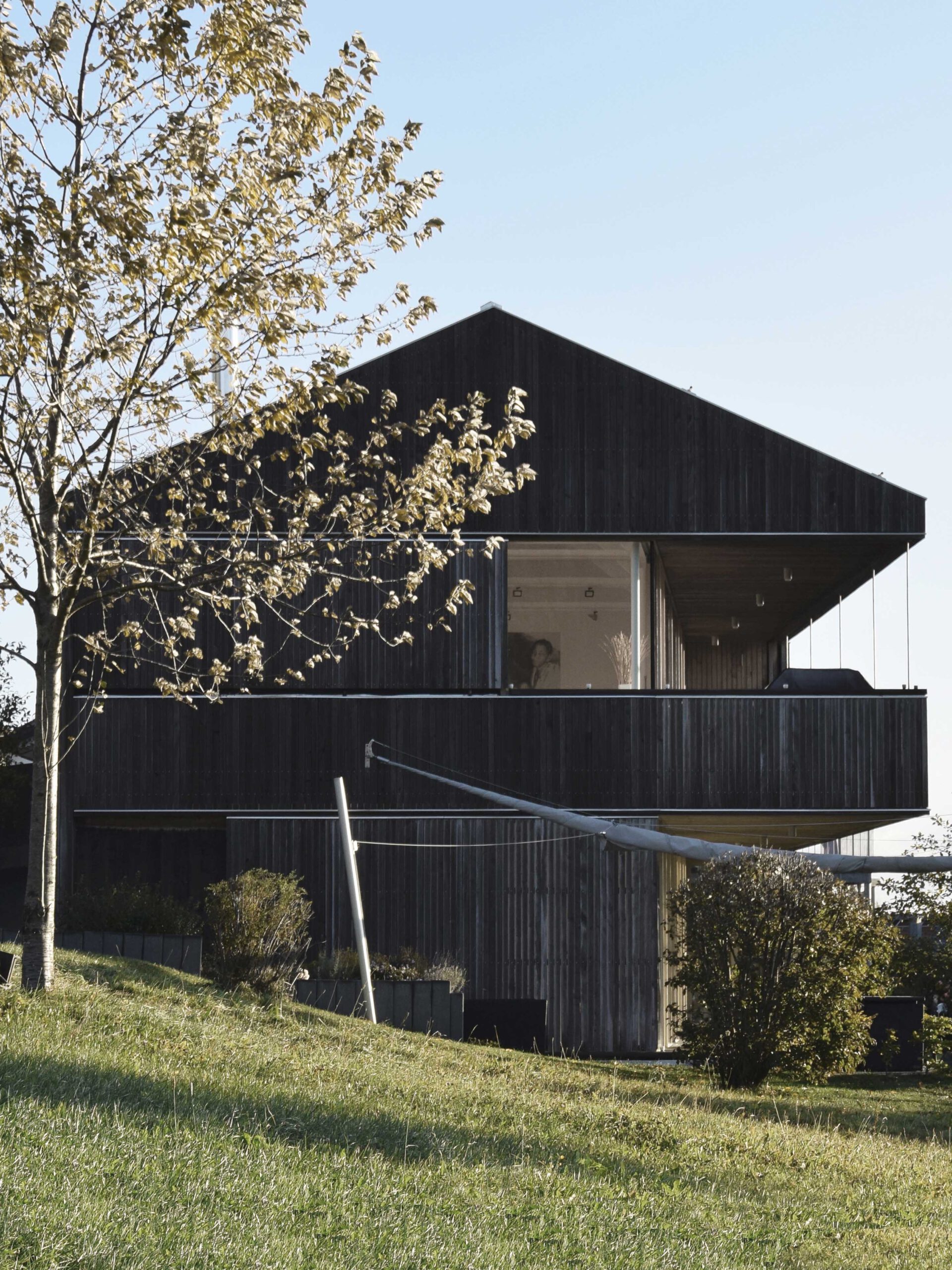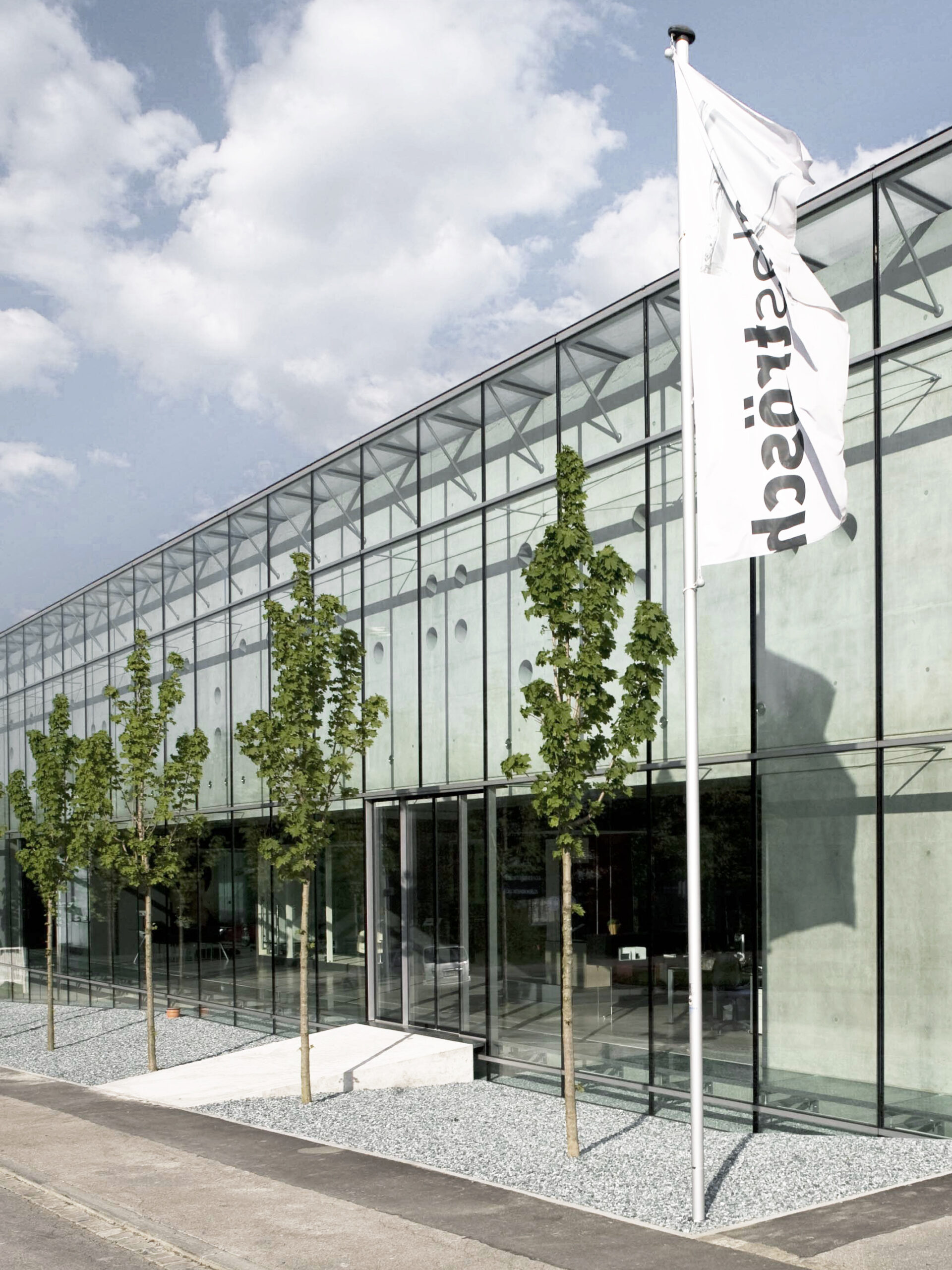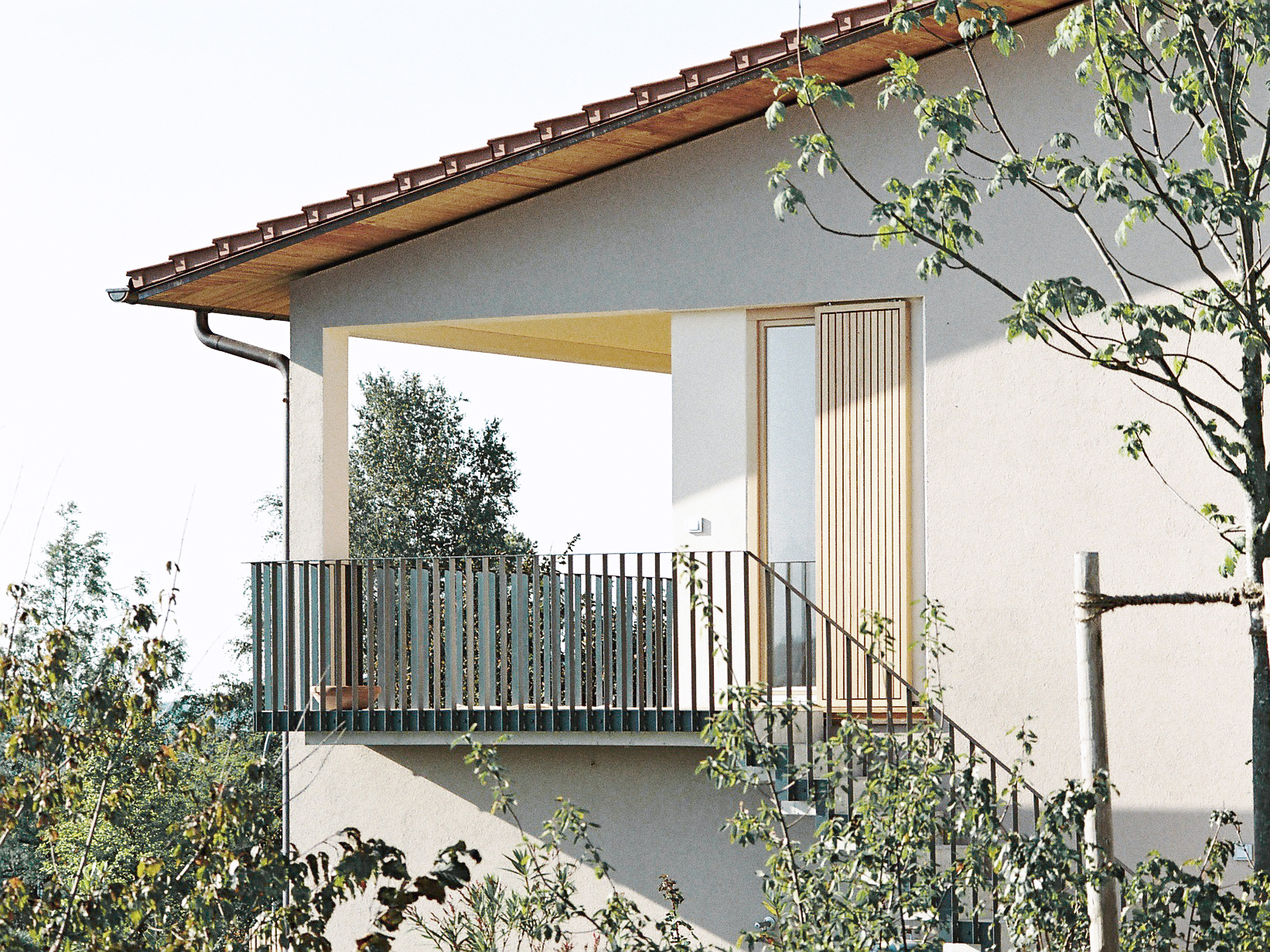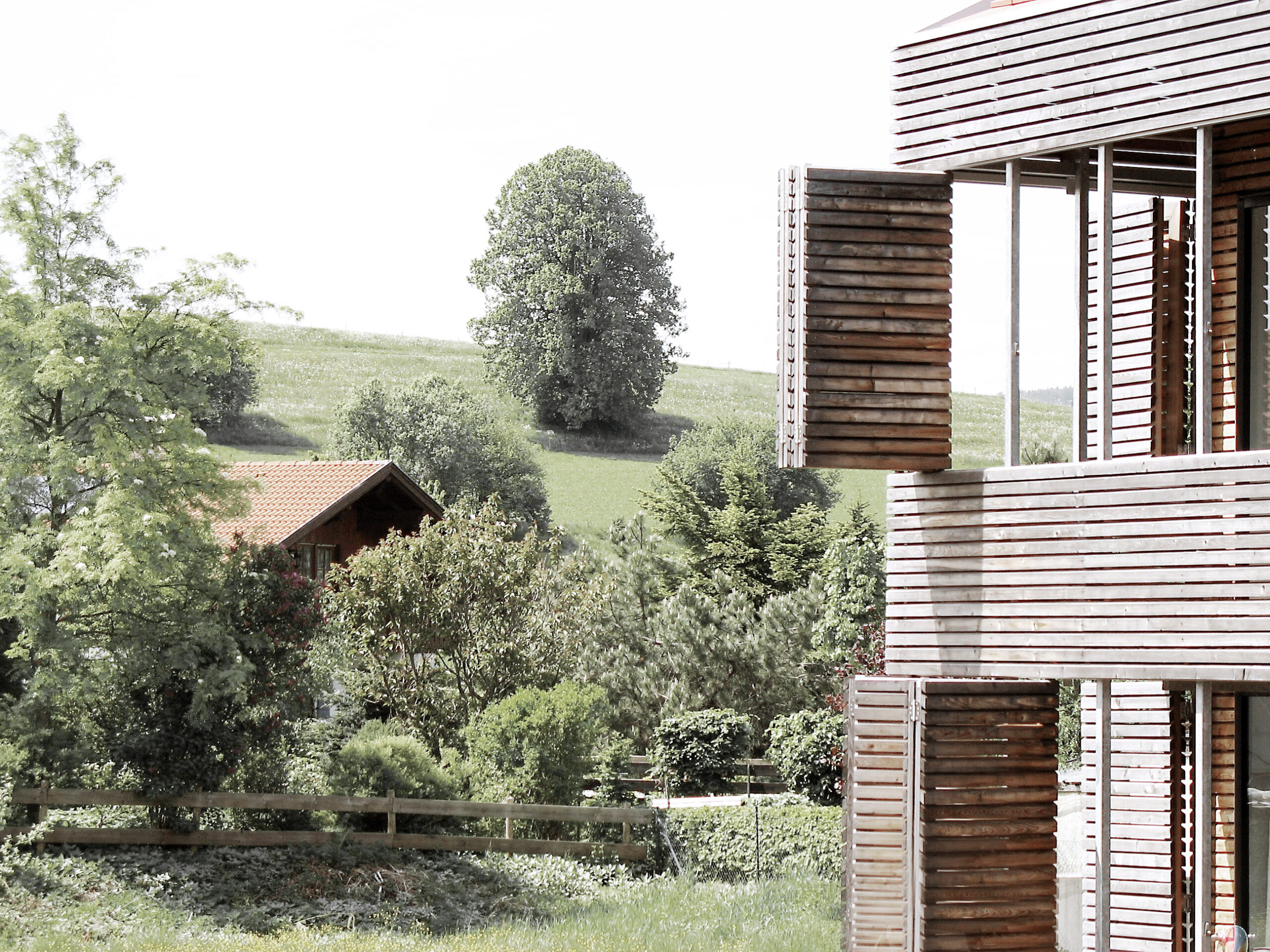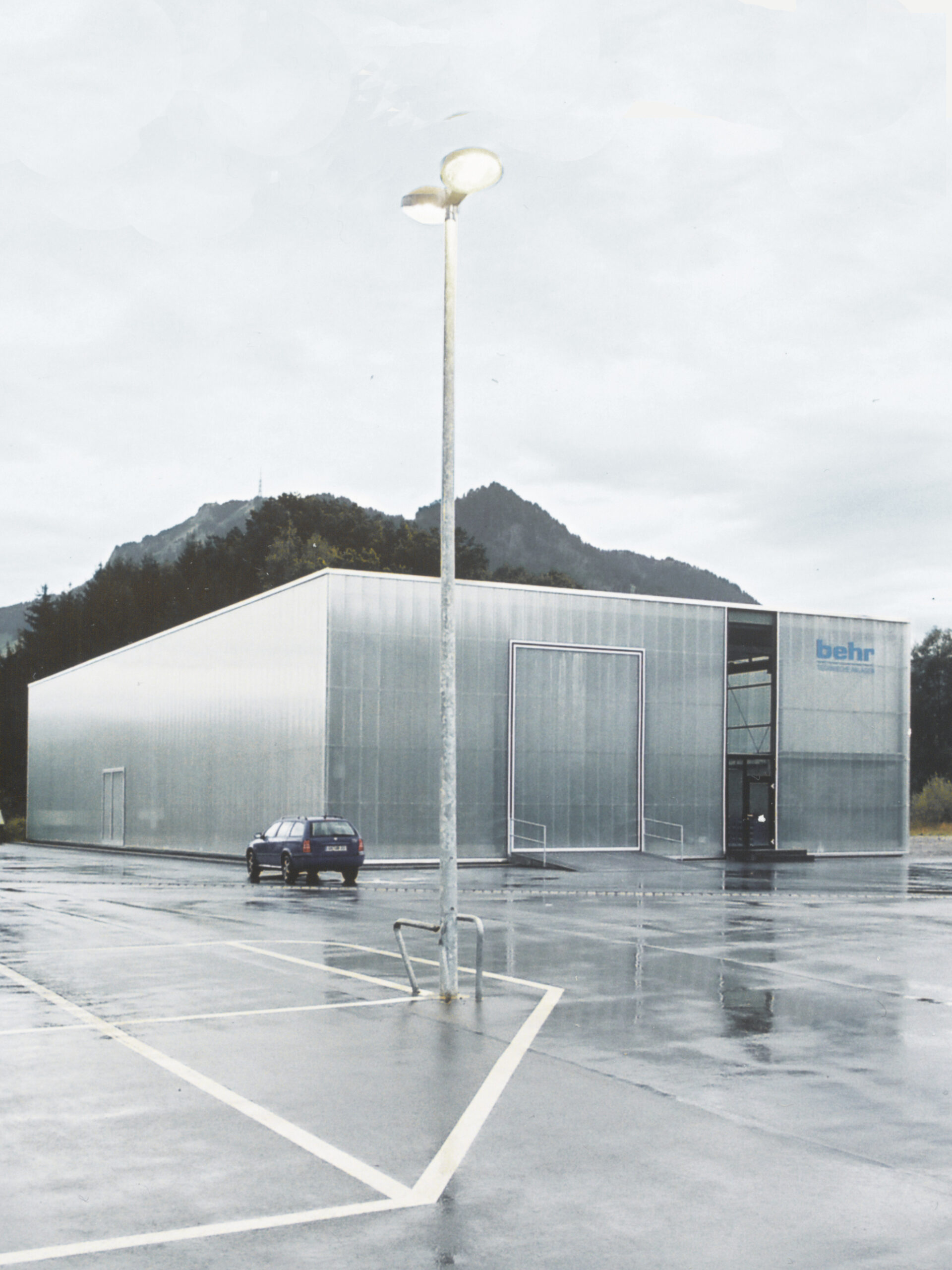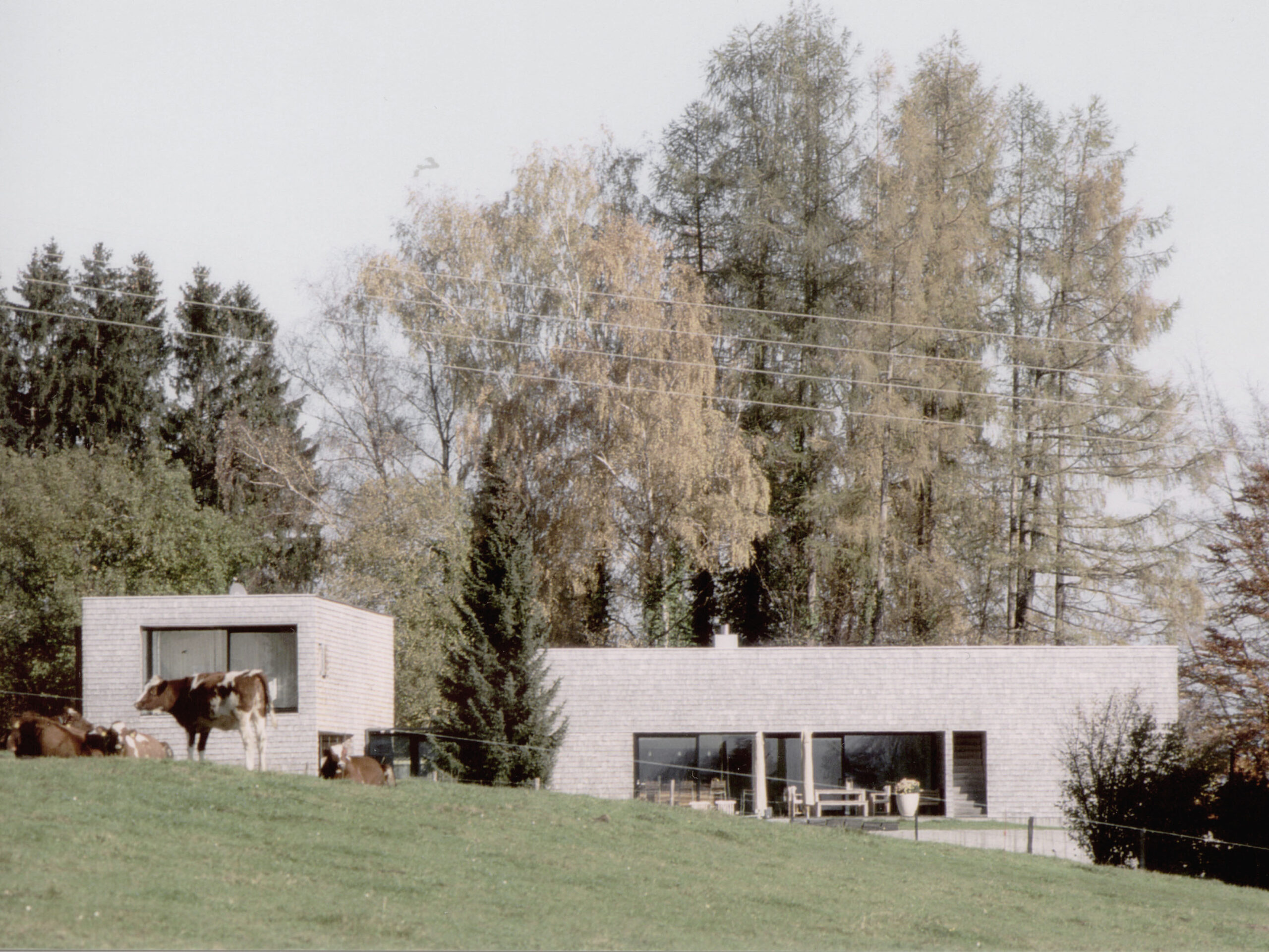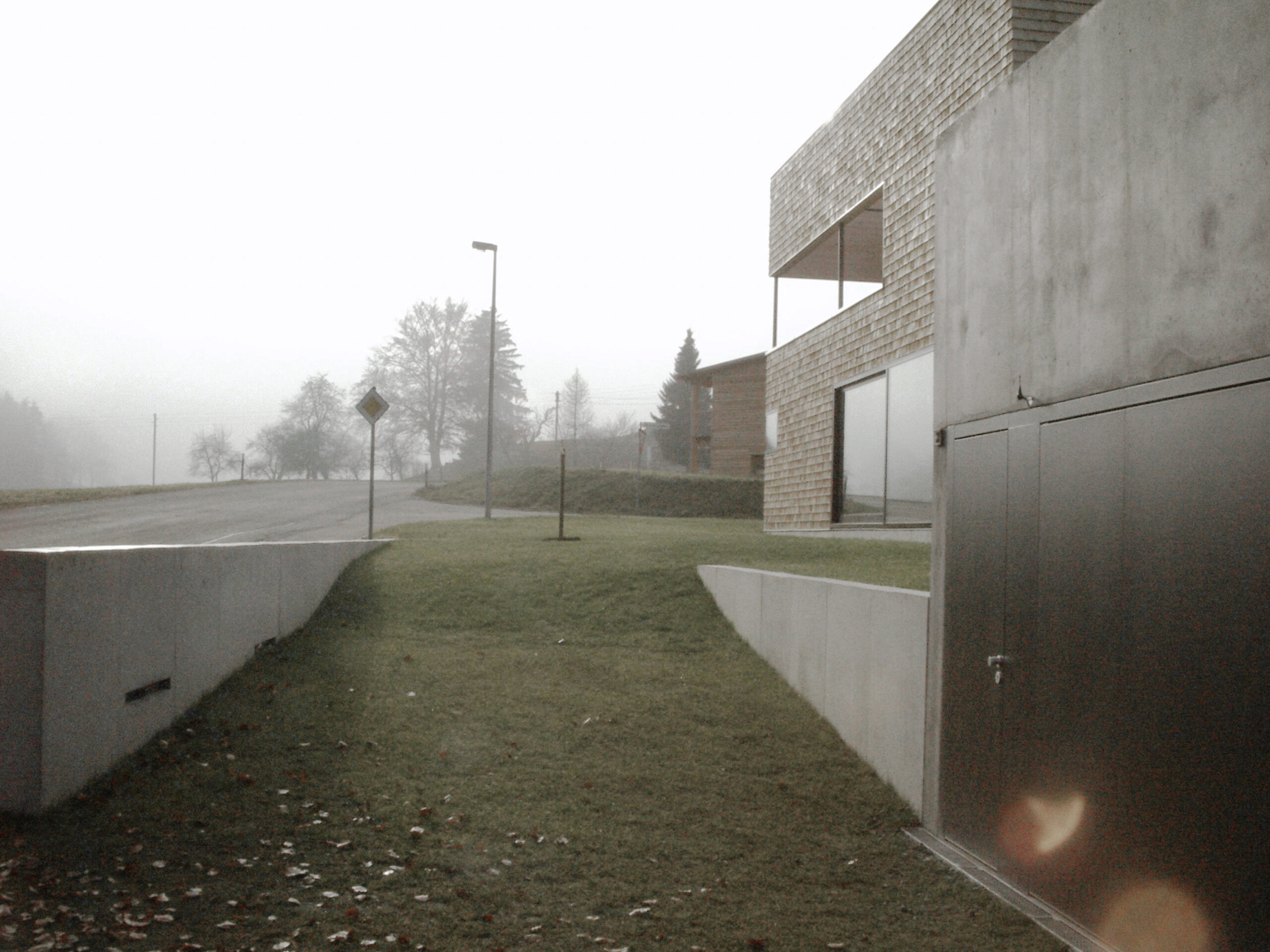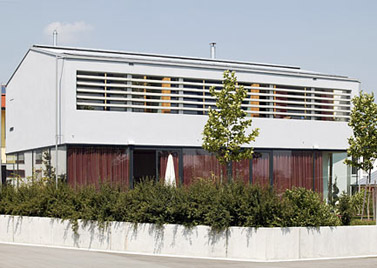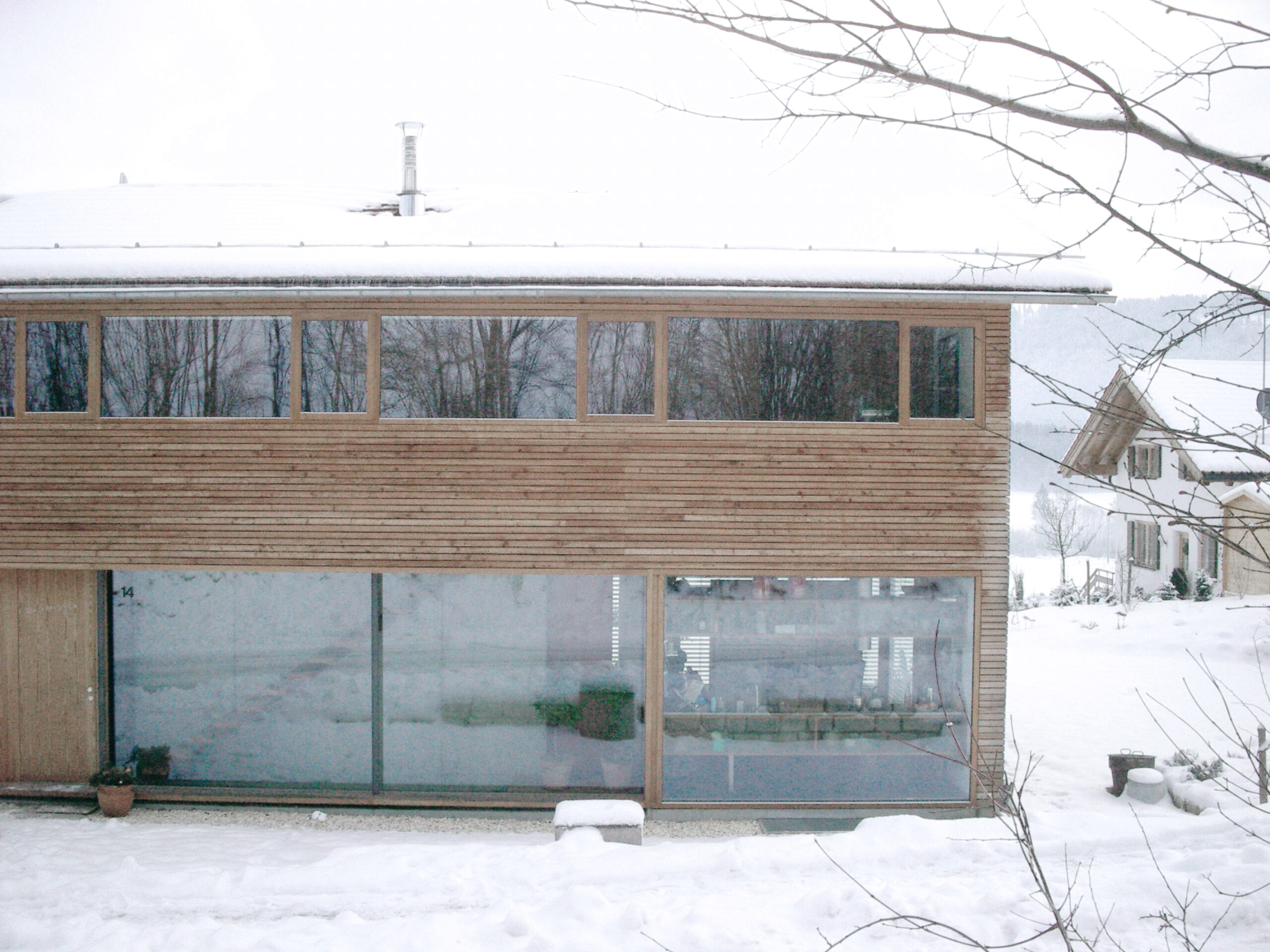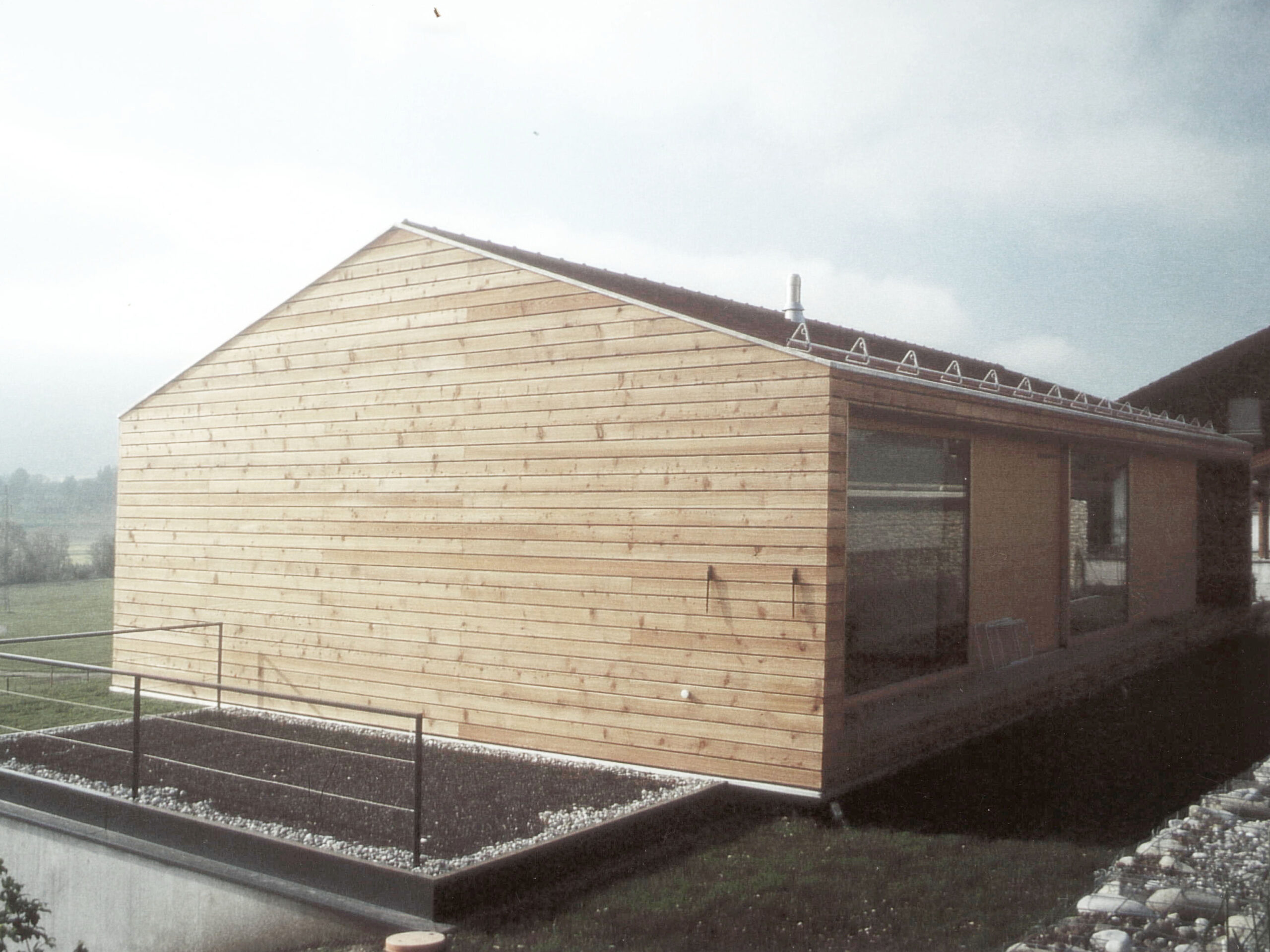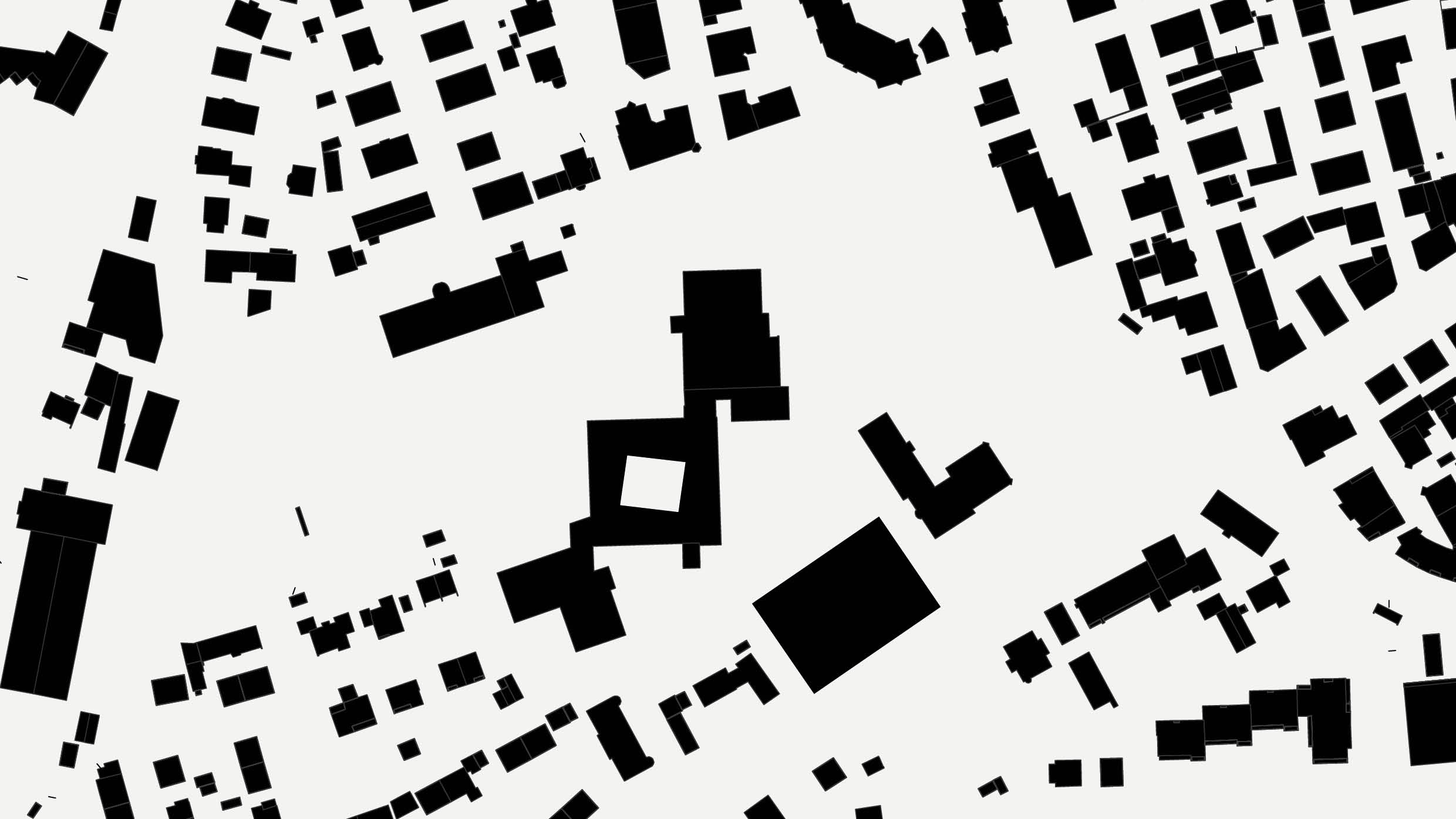
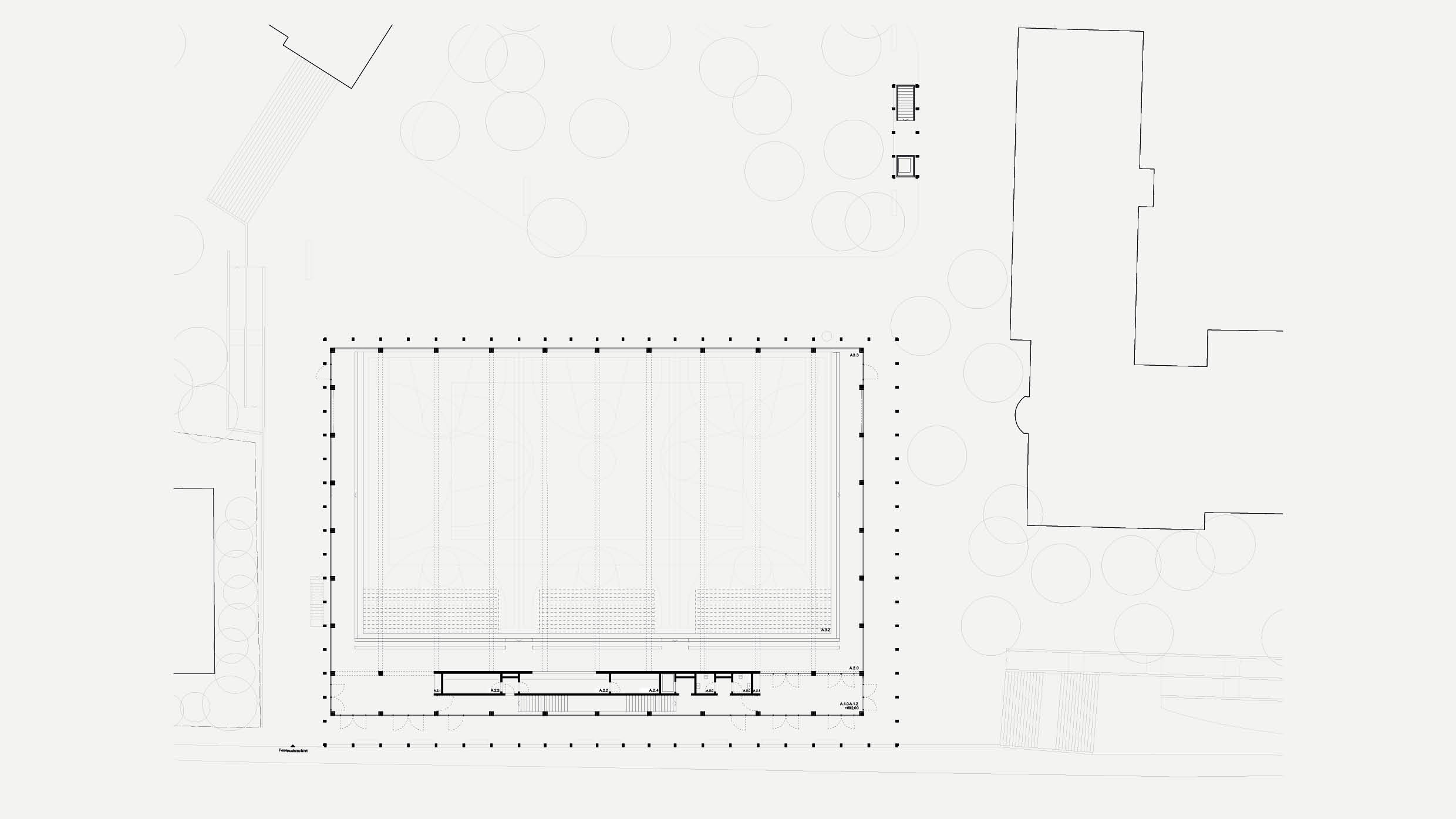
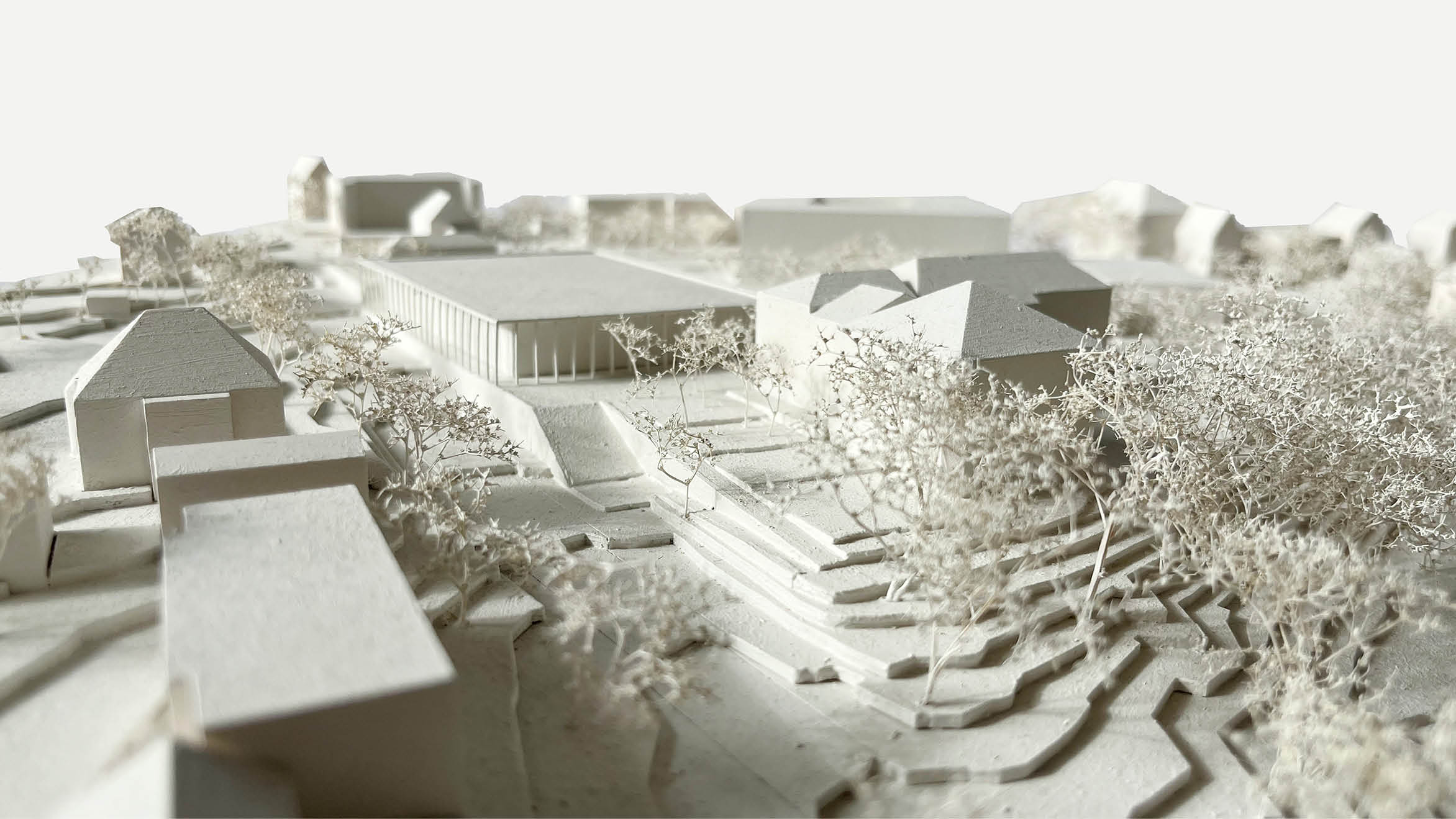


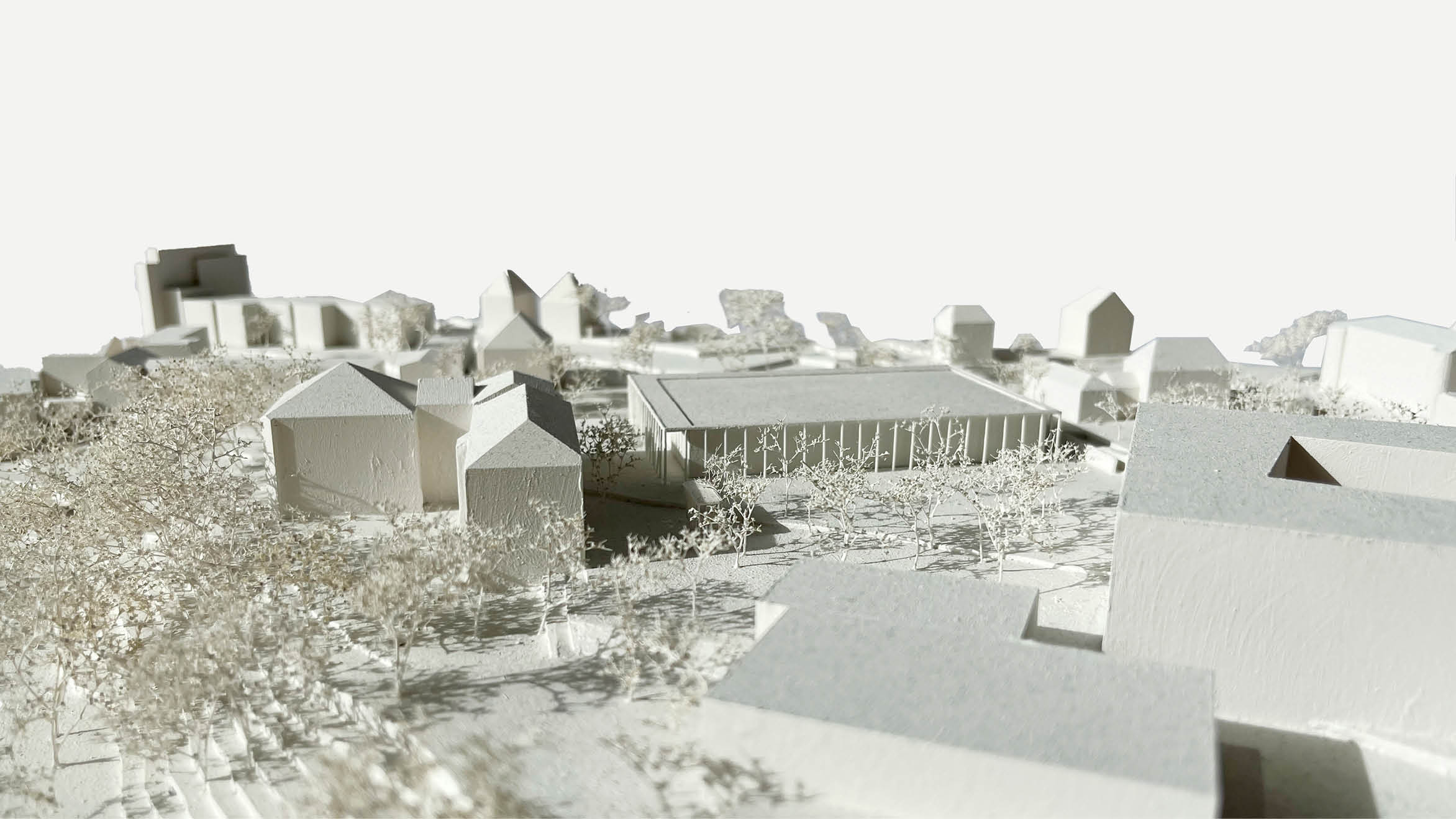
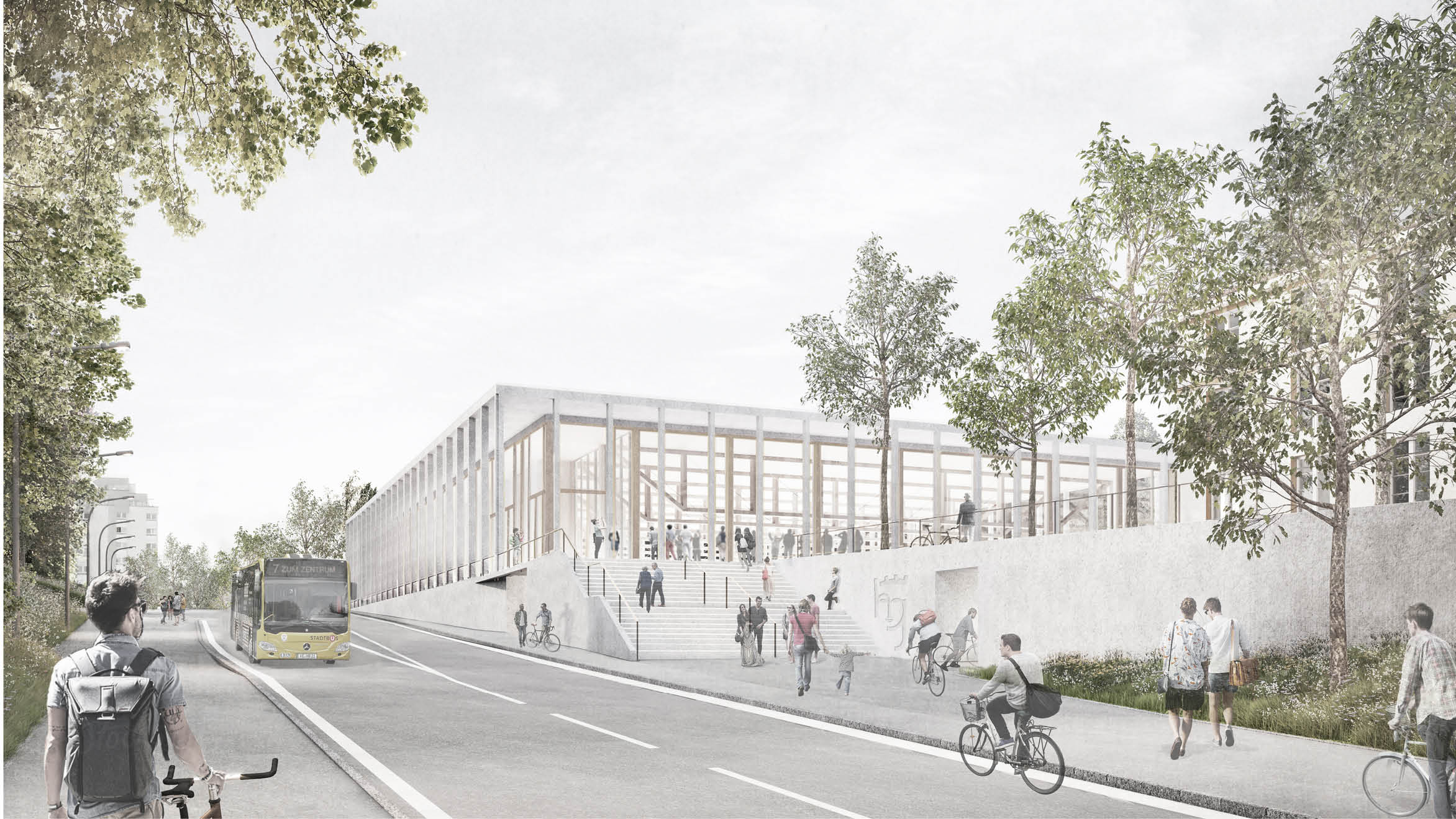
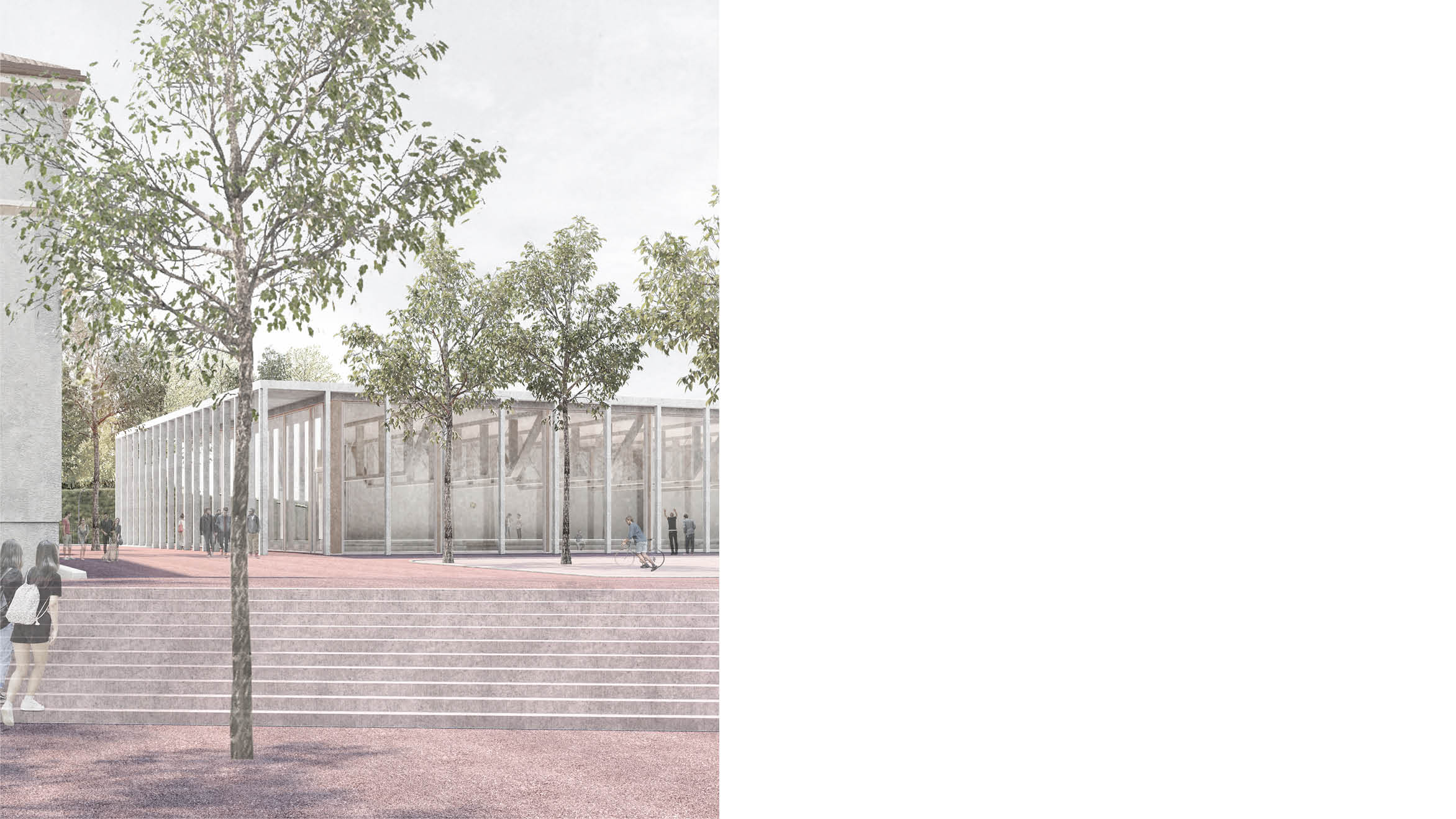
SPORTS HALL KEMPTEN
The sports hall as a public space | The city of Kempten intends to build a new triple sports hall. This is due to an existing shortage of space, on the one hand at Hildegardis Gymnasium and on the other at club level. In addition to satisfying the space requirements, additional added value is to be created by activating the sports hall for up to 800 spectators. The sports hall is thus not only seen as a pure sports facility, but also as a public place, as an identity carrier for the city's population.
Position in the urban space | Due to its self-image as a public building, the sports hall is positioned confidently on a plinth in the street space of Lindauer Strasse. This both creates a presence in the urban space and strengthens the legibility of the structure behind it, the school, from the street. Externally, a reciprocal address is created between the school and the urban structure, and internally, a visual relationship to the urban space, a “window to the city”, is achieved. In order to generate this clear added value, the position in the green space between Lindauerstrasse and Reichlinstrasse called for in the competition brief has been abandoned. Instead, the large building masses, which are defined as floating structures in an overarching parking space concept, are deliberately placed in relation to each other. A sequence of three topographically staggered courtyards is created, which flow into the existing green space to the east. This will subsequently be conceived, made accessible and activated as a near-natural park space, both for the population and for the school, also as a public space. The result is clear added value for the surrounding residents, but also for the city as a whole.
The courtyards | The school building, the new sports hall and the girls' boarding school form the structural framework of the resulting courtyard sequence “entrance courtyard”, “central courtyard”, “balcony to the park”. Each of the spaces offers a different spatial quality, as well as a different emphasis of use by the users. The main purpose of the entrance courtyard is to provide access to and link the school entrances. The central courtyard is both a school playground, an outdoor area for the canteen and a hub for accessing the site, as well as a multifunctional space for various events such as school theater performances or festivals. On the one hand, the balcony overlooking the park provides a green space to linger and enjoy the view; on the other hand, it serves as an infrastructure area at the rear of the park for the park's performance scenarios. The planting in the urban area follows an artificial pattern. A radial arrangement offers variability of functions and at the same time legibility in the space due to the clear spacing. This allows given functions to be better adapted to the urban space without deviating from the strict grid of radii. In addition, this arrangement creates a differentiated spectrum of a dense grove of tall trees in the center and individual solitary trees, which are increasingly transparently dispersed towards the outside and provide more clarity.
As a reminiscence of historical, urban buildings with stone walls and a wooden roof structure, the building appears as a stone column structure that rises up from the stone base of the courtyard. Inserted asymmetrically into this, a dissolved, wooden column and supporting structure forms the frame of the “glass showcase”, the sports hall. On the east and west sides, the reference sides to the urban outdoor space, the stone column structure is clearly detached from the glass showcase, creating an arcade structure. In the load case of public use, the building is articulated as a transparent structure that specifically seeks references to the urban space on the east side, the street space of Lindauer Strasse, Birkensteig on the south side and the interior space on the north side, visually connecting both areas. When the school is in use, the character of the building can be changed from transparent to closed and introverted by lowering the privacy screen, which also serves as sun protection. In analogy to the position of the glass display case in the stone support system, the playing field itself also has an asymmetrical position in the building structure. This creates a three-sided viewing situation from the spectator level, while at the same time strengthening the direct connection to the central courtyard. Functional necessities on the spectator level, such as the kitchen, the bar and barrier-free WCs, are bundled together and appear in the form of a stone block as the “backbone” of the sports hall, which at the same time formulates the spatial separation from the shooting of the athletes' level. The changing rooms in the basement are accessed via a central corridor in an east-west direction.
Sustainability and cost-effectiveness | In addition to the aforementioned soft factors and identification potential, the overarching concepts of sustainability and cost-effectiveness are seen as mutually dependent disciplines in the proposed concept. The proposed location on Lindauer Strasse and the absence of a separate parking garage allow for a maximally compact spatial system. A second building is therefore obsolete. On the one hand, this achieves an optimized ratio of room volume to enveloping surface against the outside air and, on the other, drastically reduces the sealed area. The choice of materials is based on sustainability and cost-effectiveness over the entire life cycle. The avoidance of costly maintenance measures is therefore already taken into account in the design of the building. Robust materials are used in places where the greatest stresses are to be expected (external columns: reinforced concrete). Less heavily stressed areas, such as the supporting structure, are made from sustainable and renewable raw materials. In addition, the formulation of the building structure also contributes to increased energy efficiency and a reduction in climate-relevant emissions. On the one hand, the glazing that extends across the supporting structure up to the ceiling makes it possible to keep the roof area free of skylights and thus maximize the area for a photovoltaic system, while on the other hand, high solar gains can be expected in winter, which can considerably reduce the heating requirement. The additional energy required is provided via the connection to the district heating network.
TOPIC:
3-Court Sports Hall With Parking Garage
LOCATION:
Kempten, DE
YEAR:
2020
CLIENT:
Stadt Kempten
TYPOLOGY:
Institutional | Infrastructure
STATUS:
Competition
TEAM:
Michael Becker, Roland Schafroth
PARTNERS:
Hermann Kaufmann zt, Schwarzach
Keller Damm Kollegen, Munich
PLANNING TEAM:
Merz Kley Partner GmbH, Dornbirn
IB Hirdina, Kempten
VISUALISATION:
Becker Architects Planners
WORKS
No.155 | 2023.
School for Timber and Design Garmisch-Partenkirchen

No.132 | 2016
Development Plan Mindelheim Tractor Museum
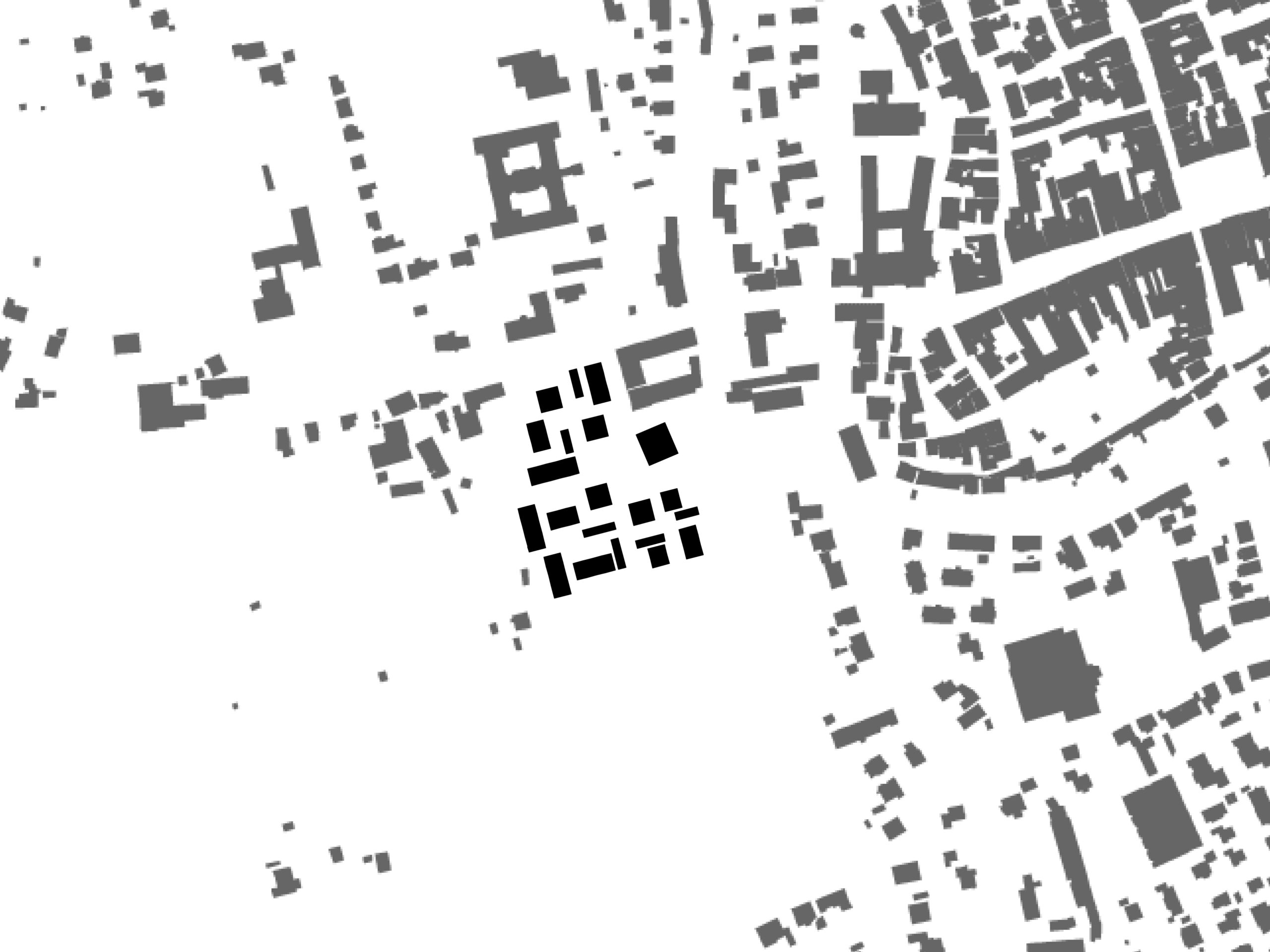
No.119 | 2014
Development Plan of Hospital Kempten

No.111 | 2013.
Transformation Of The Haindl Paper Factory Site Waltenhofen
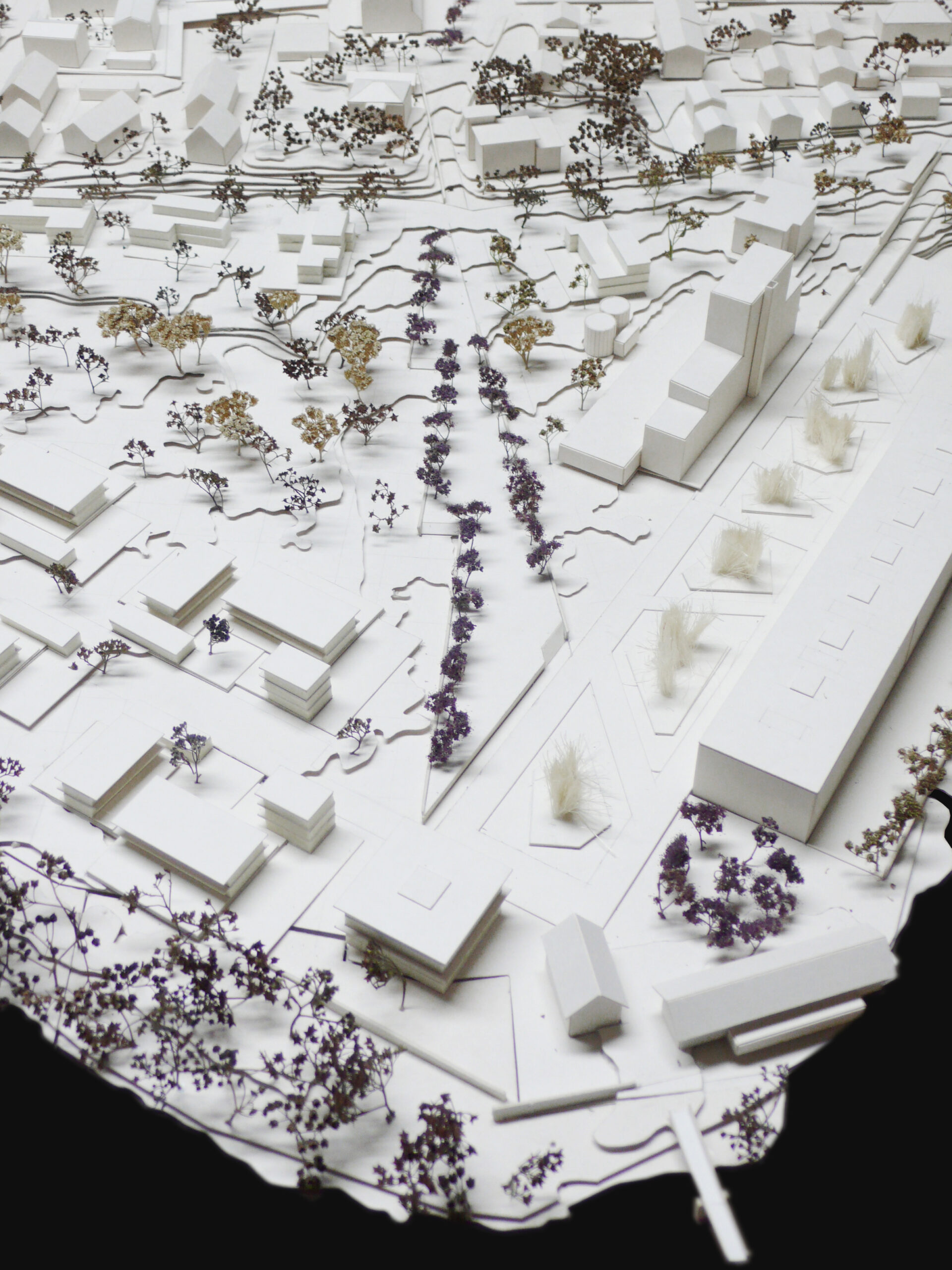
No.102 | 2012
IFEN Walmendinger Horn Cable Car Station

CONTACT
STUDIO KEMPTEN
Keselstraße 14
87435 Kempten. Allgäu
P.: +49.831.745 8998.0
F.: +49.831.745 8998.9
General: kontakt@becker-architekten.net
Career | Press: info@beckerarchitects.eu
SOCIAL MEDIA
LEGAL
BECKER ARCHITECTS PLANNERS BDA ©2024

